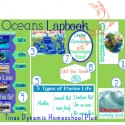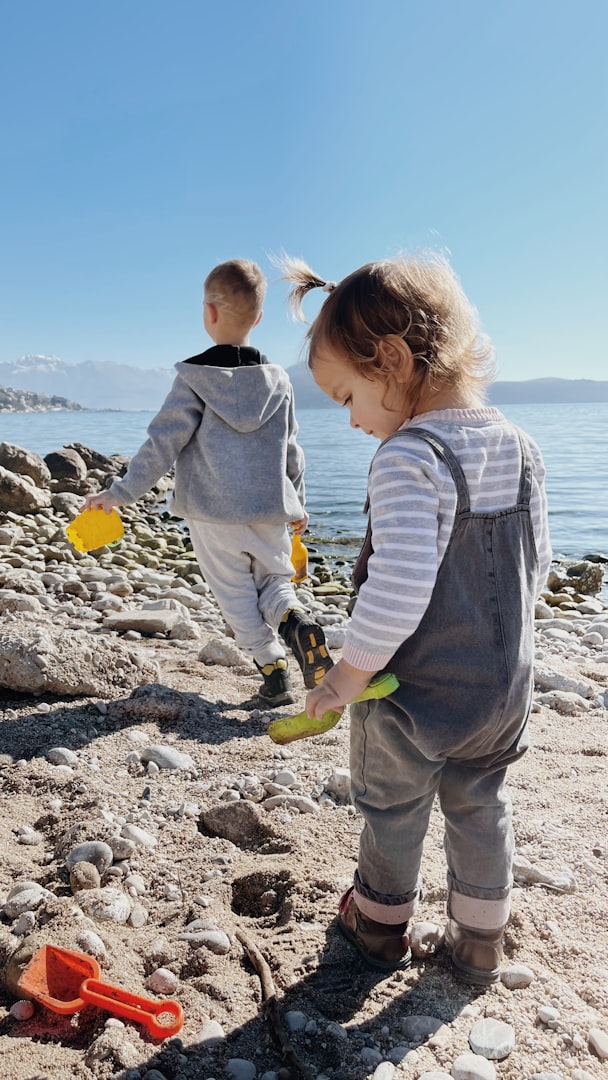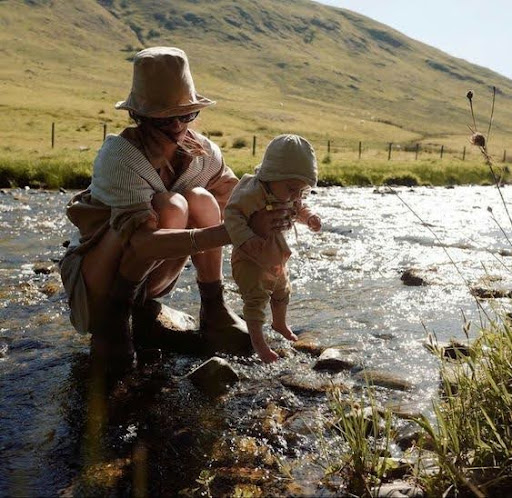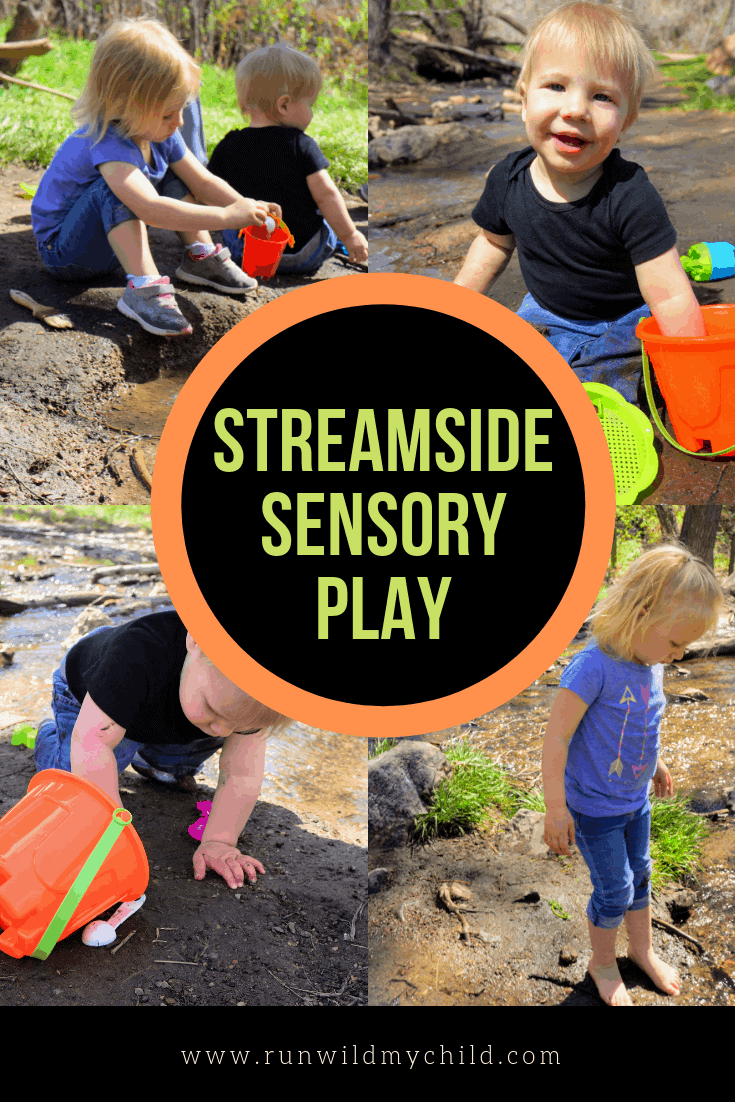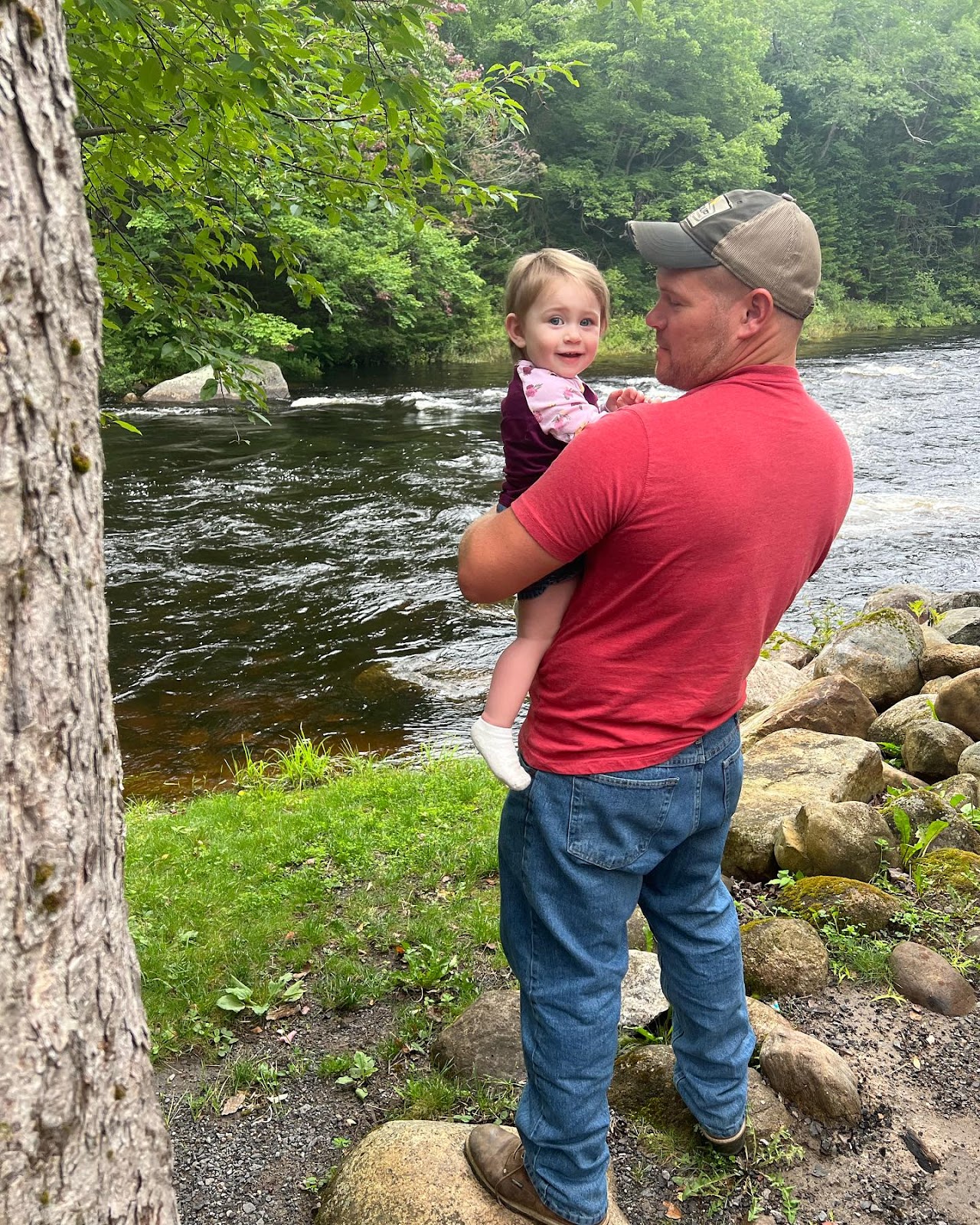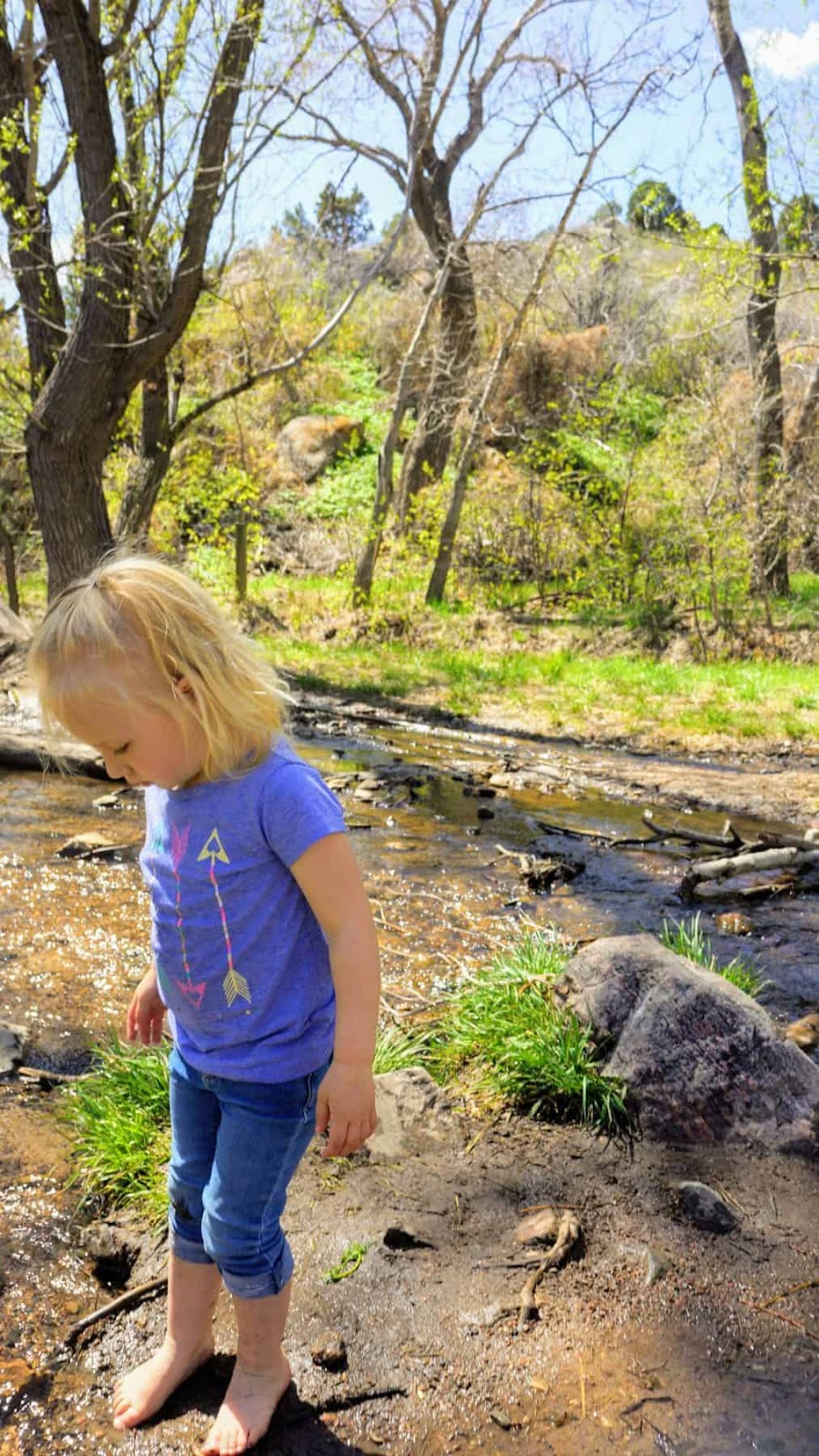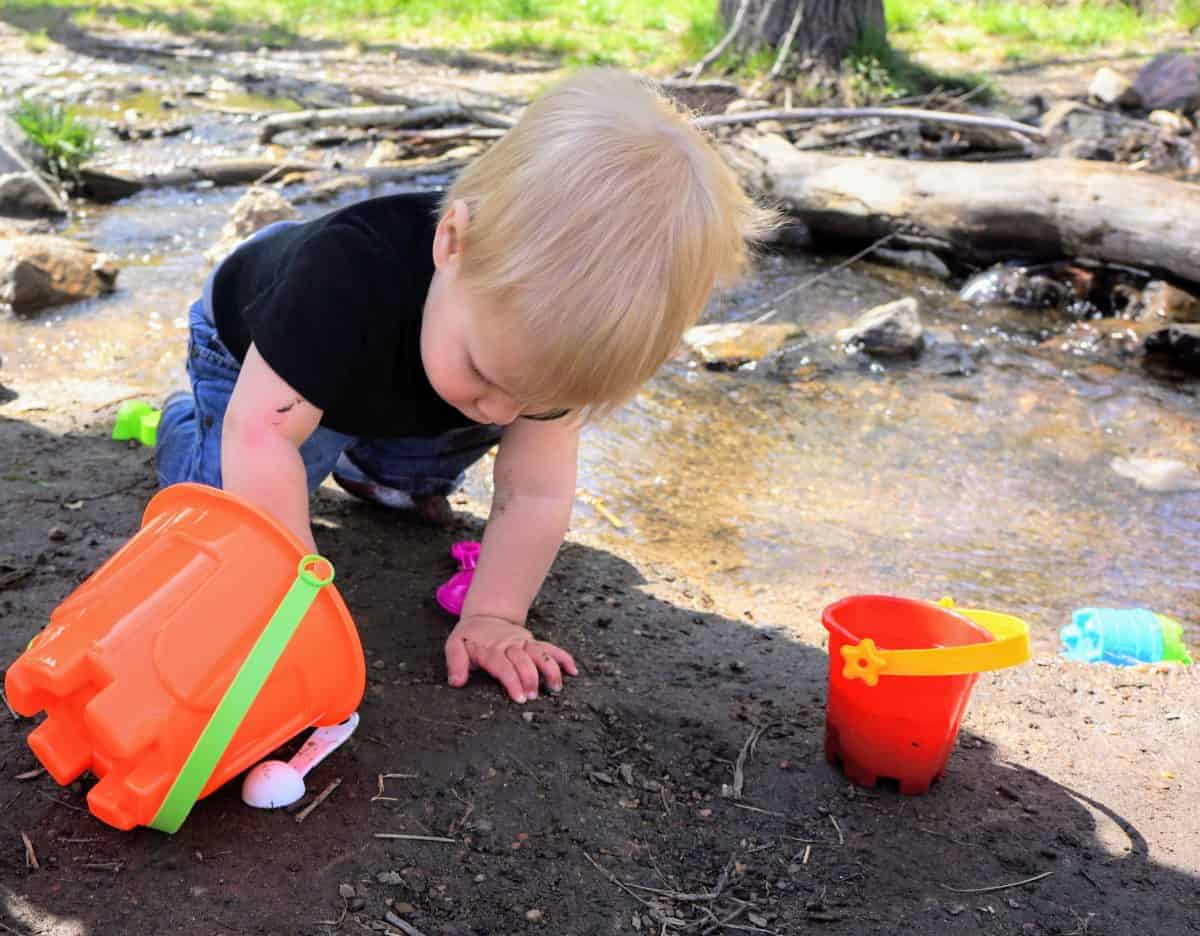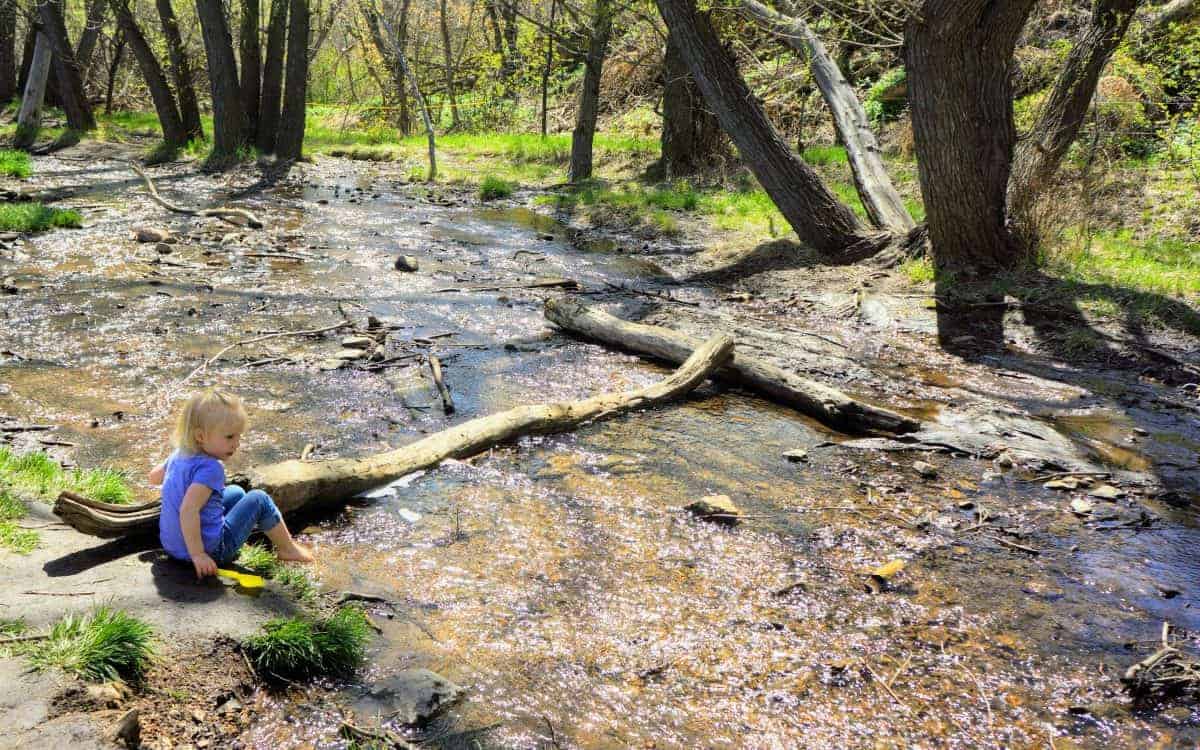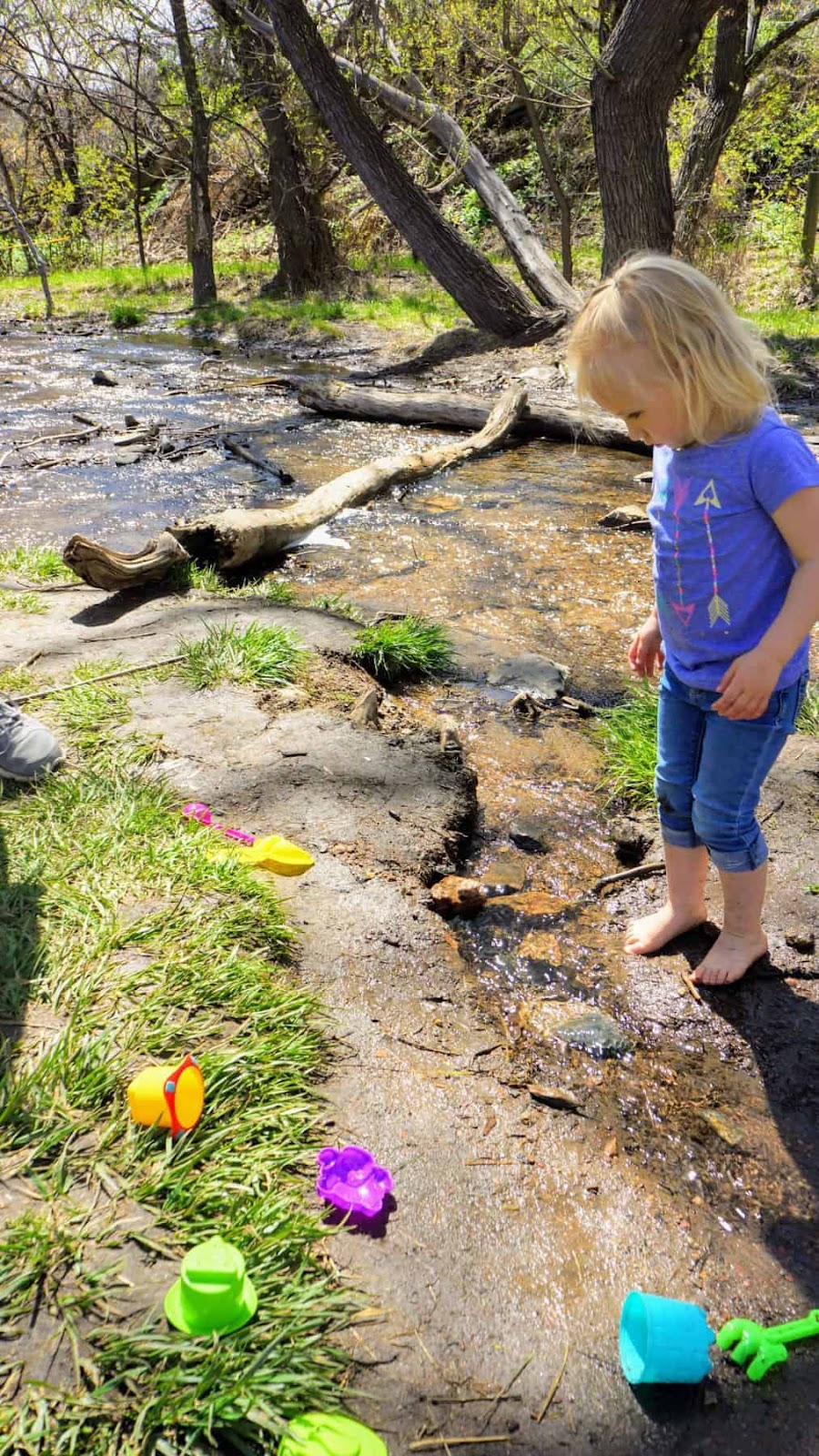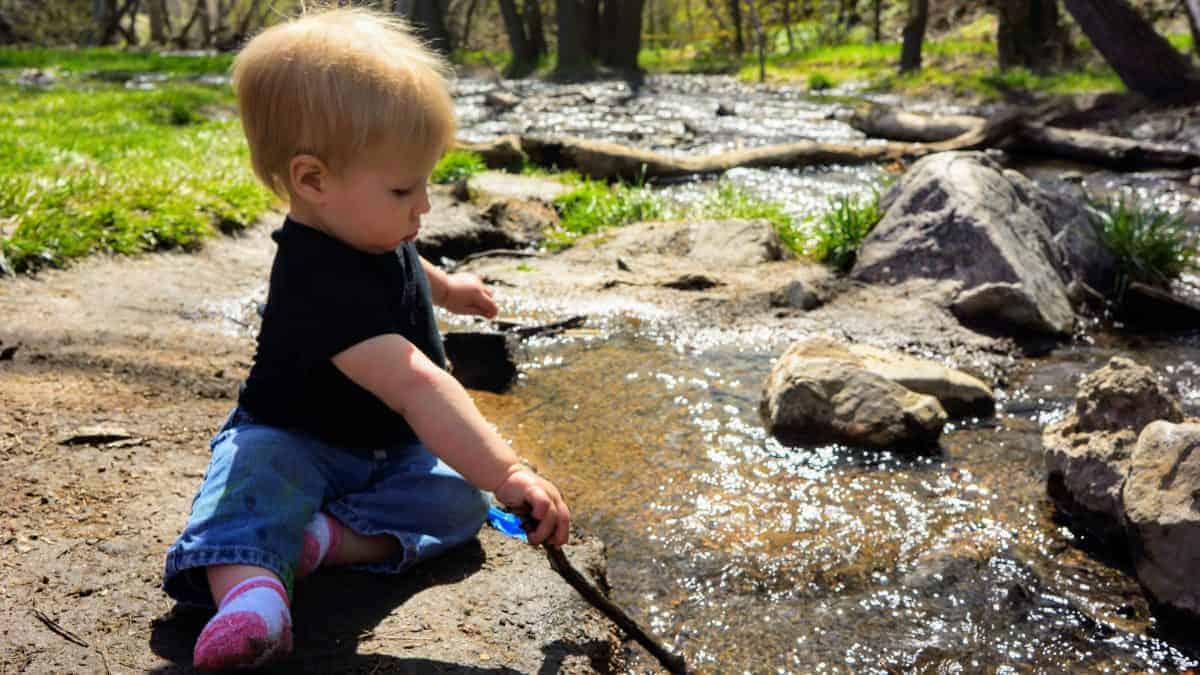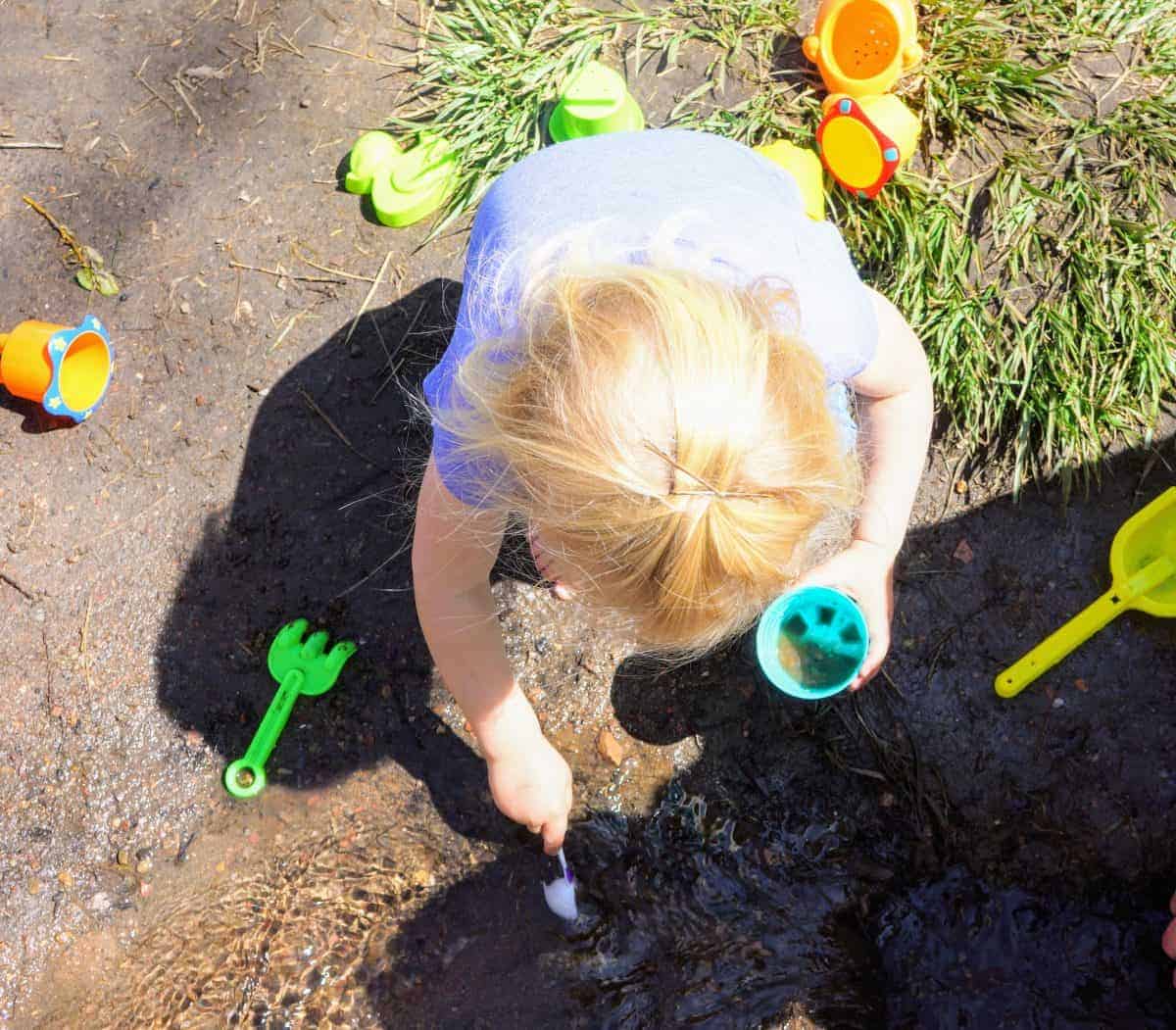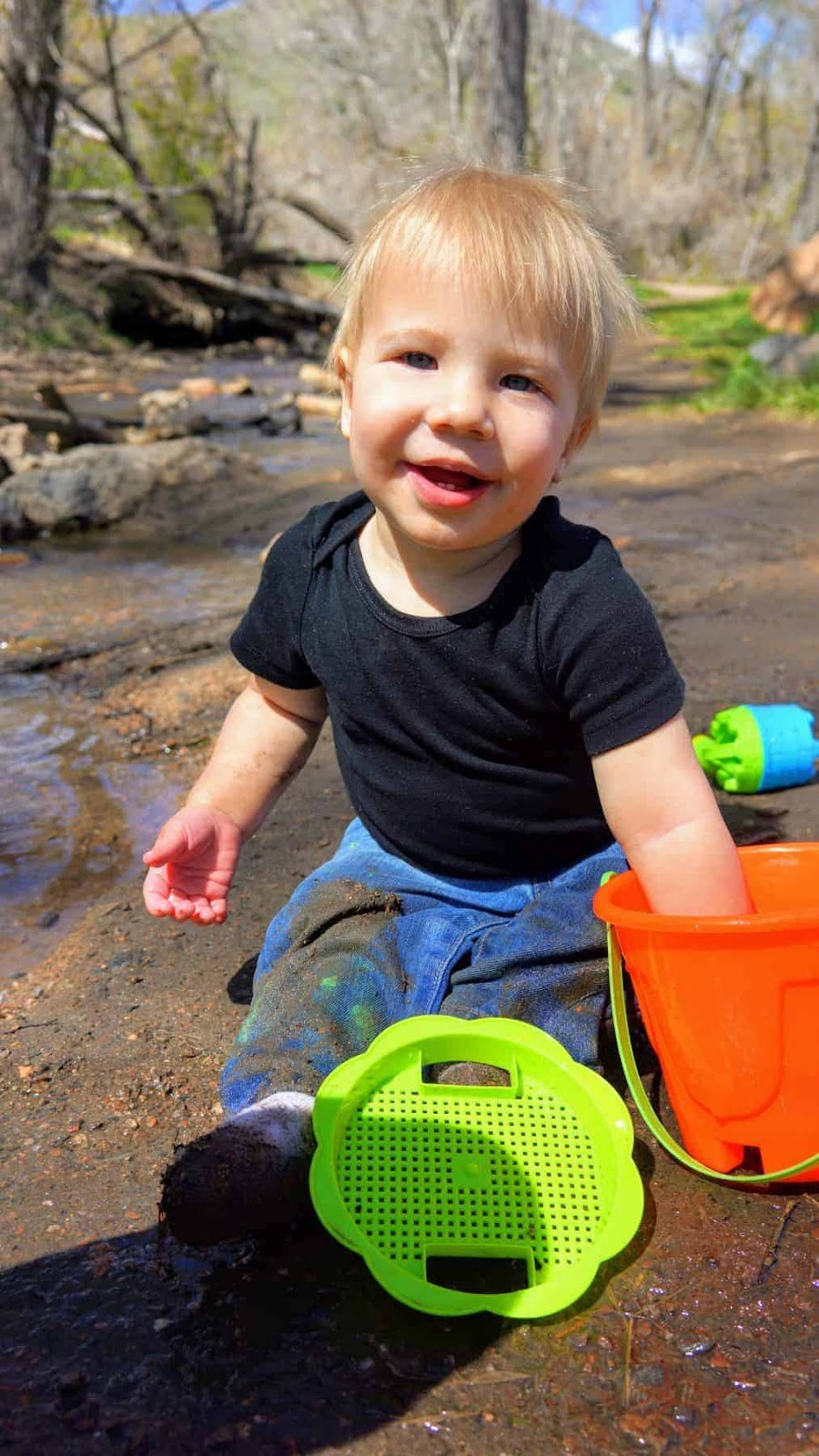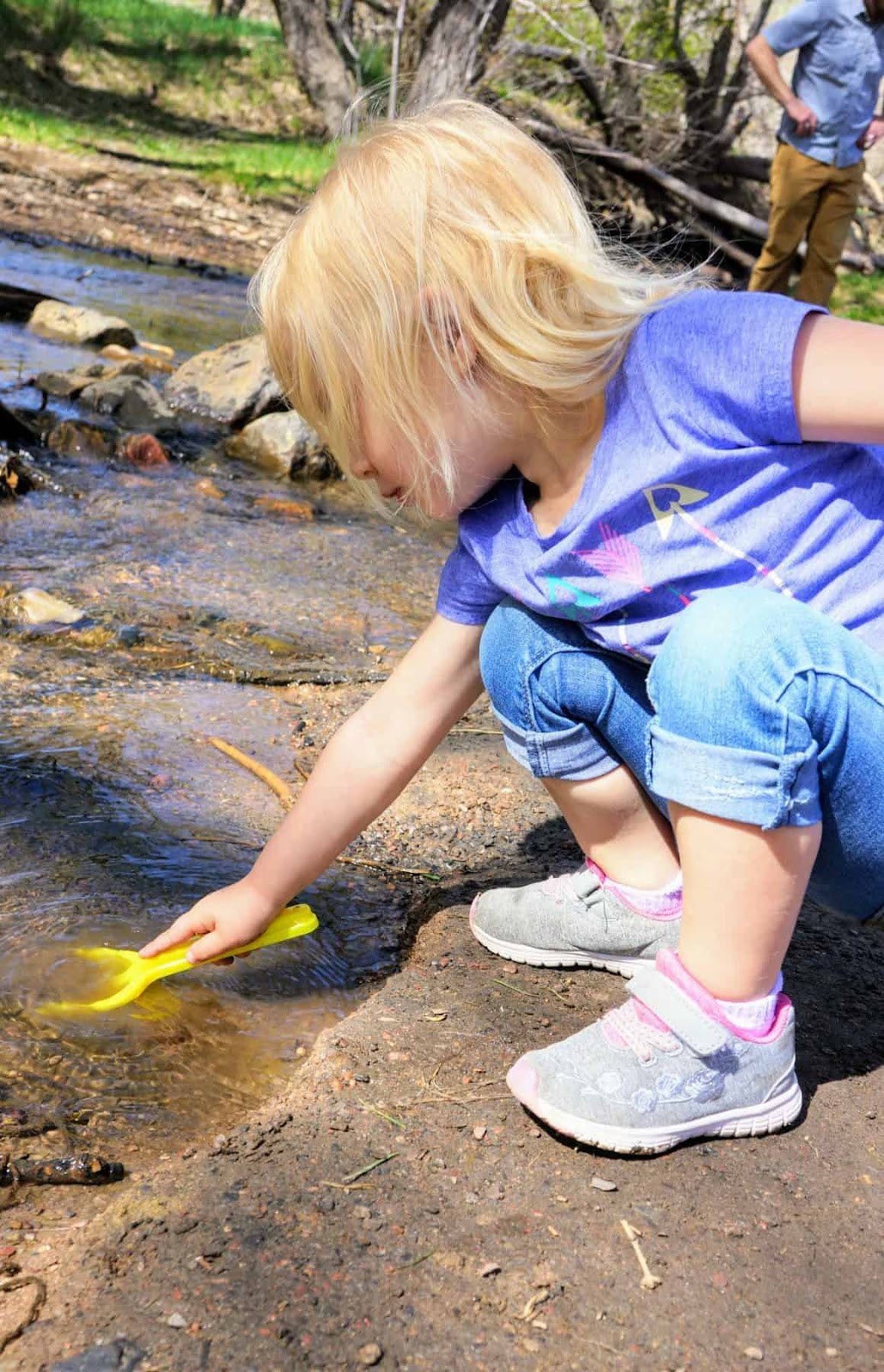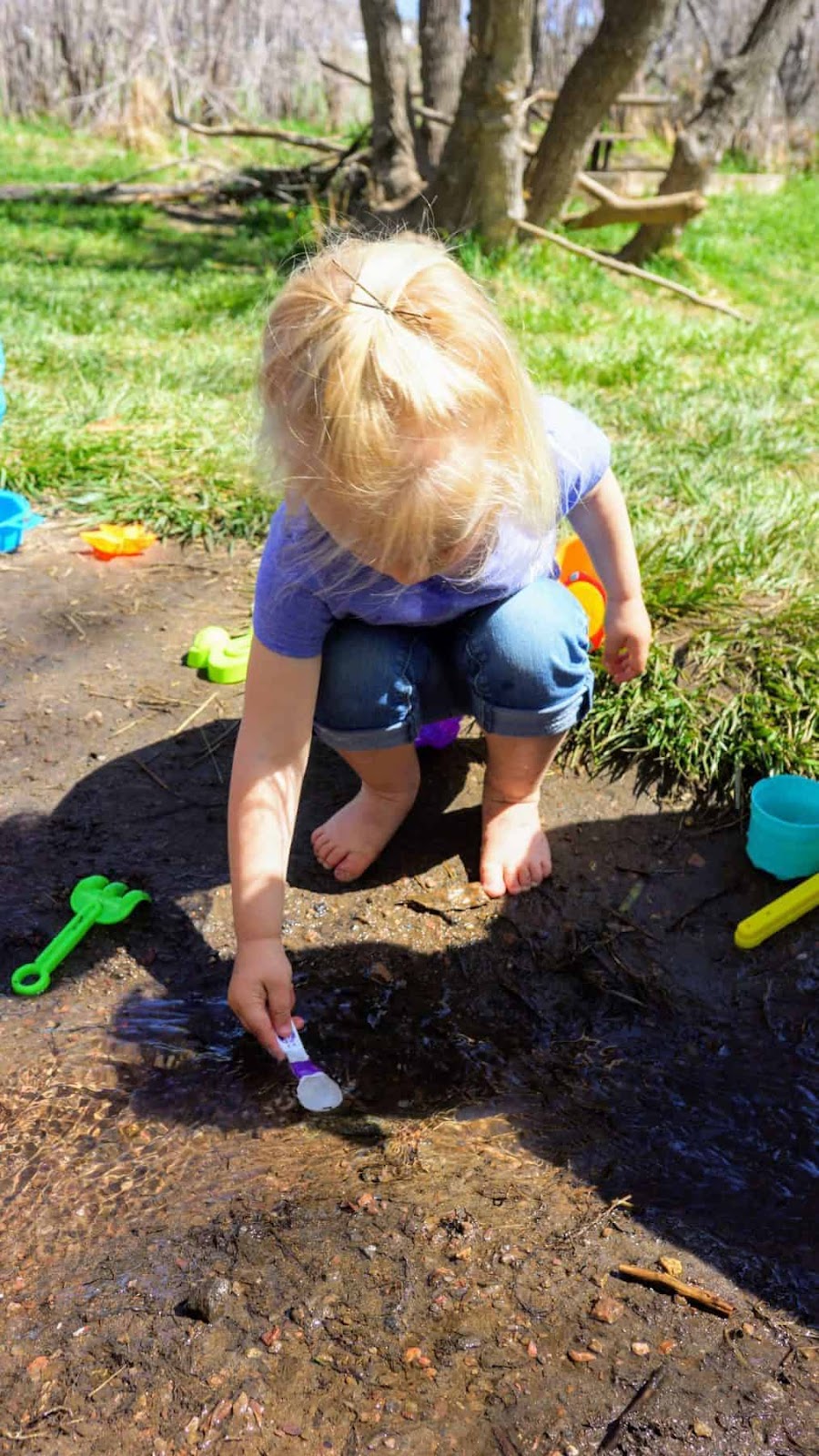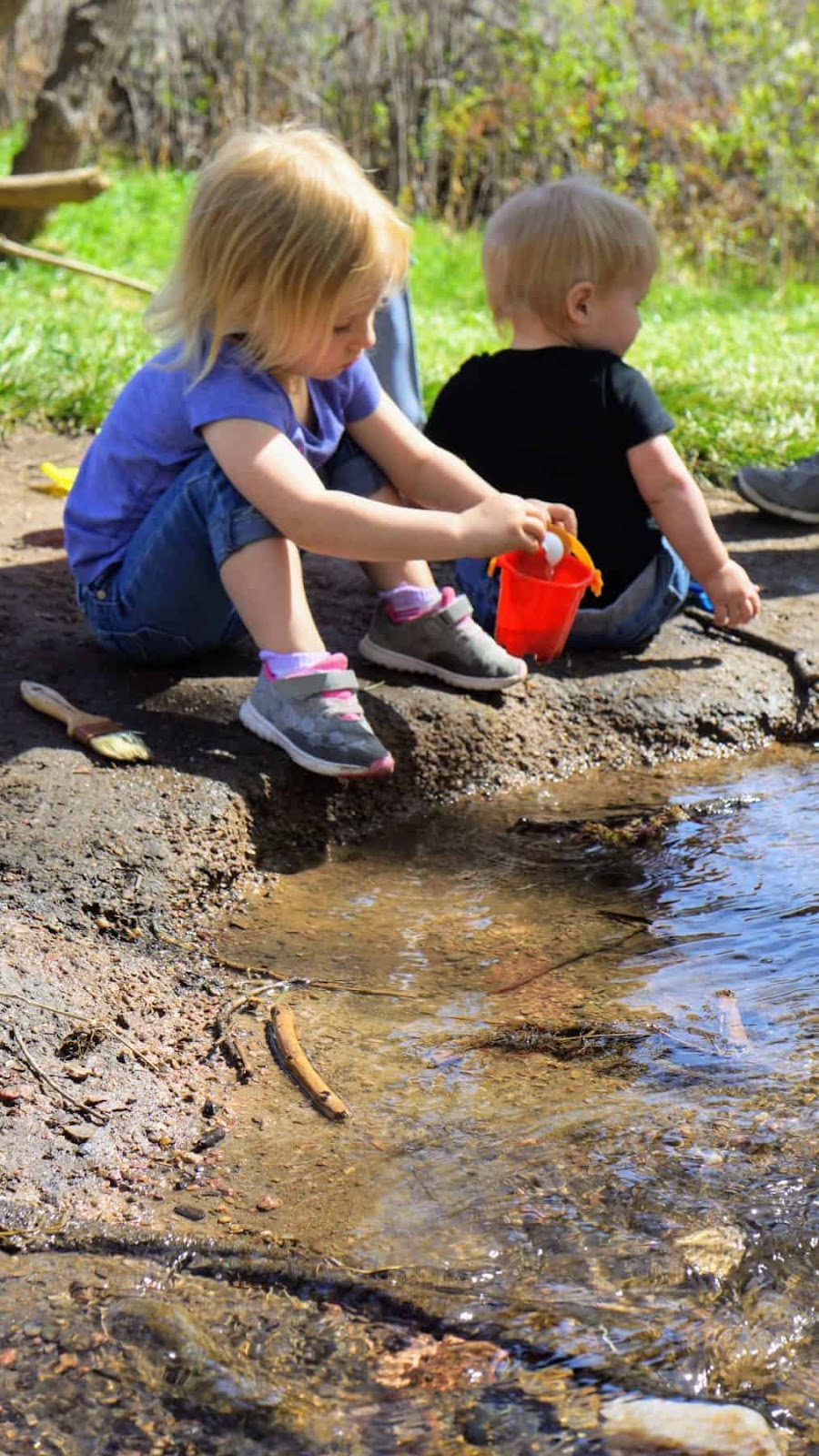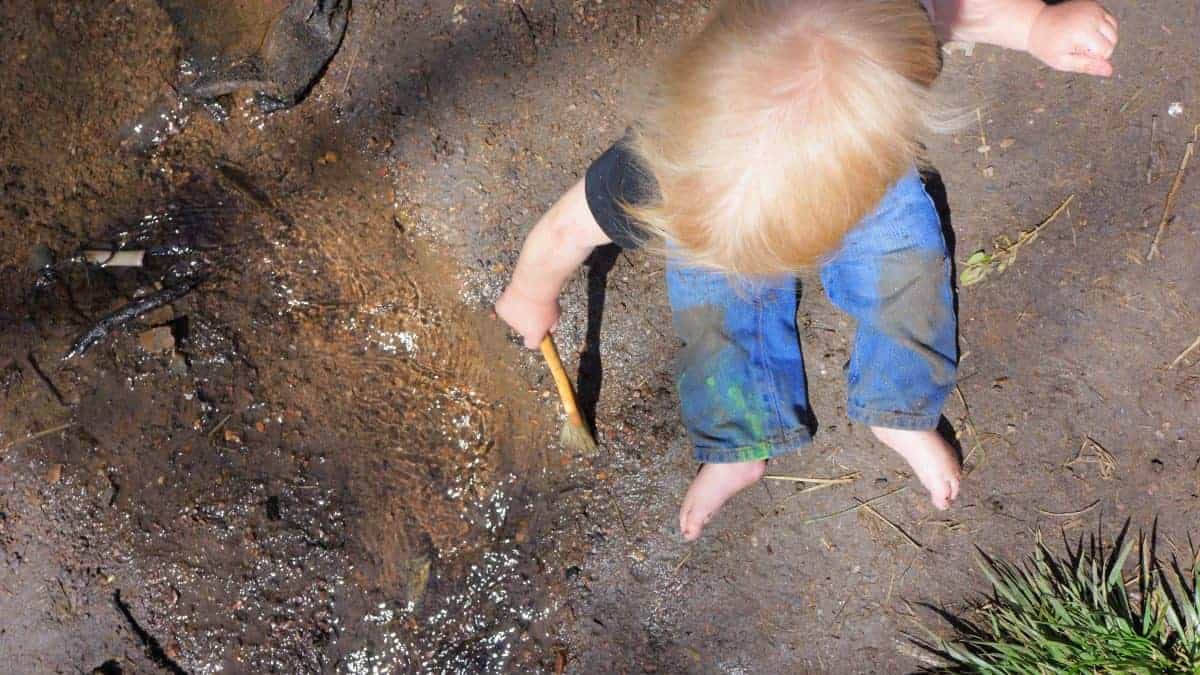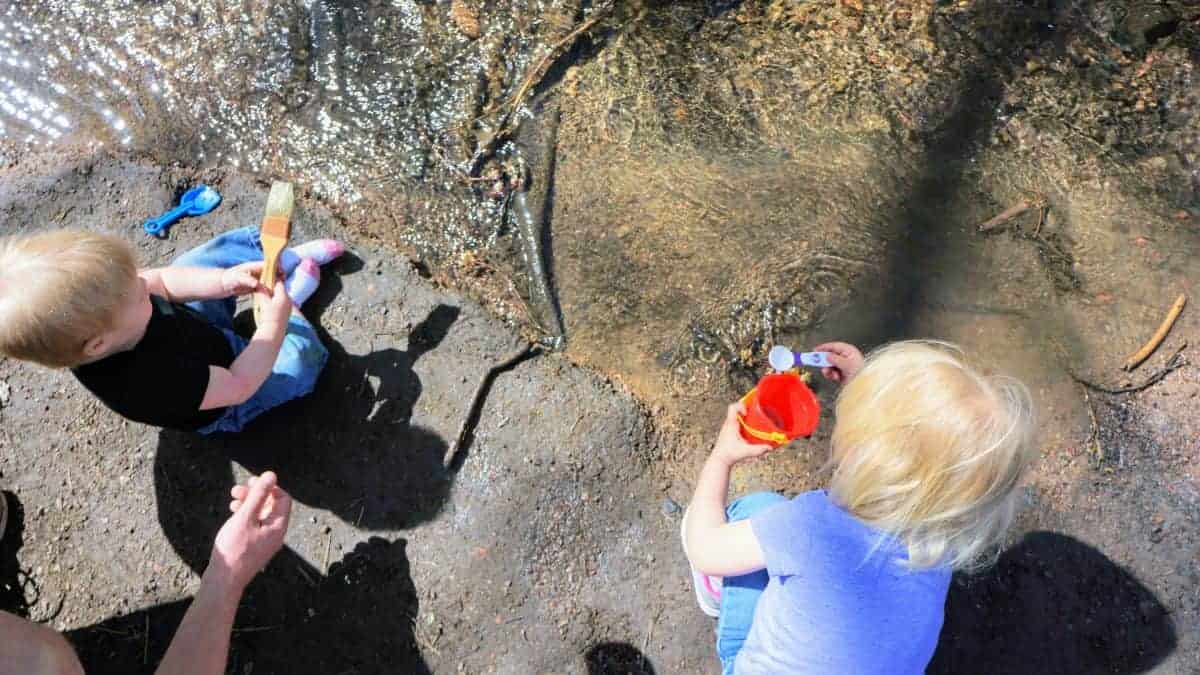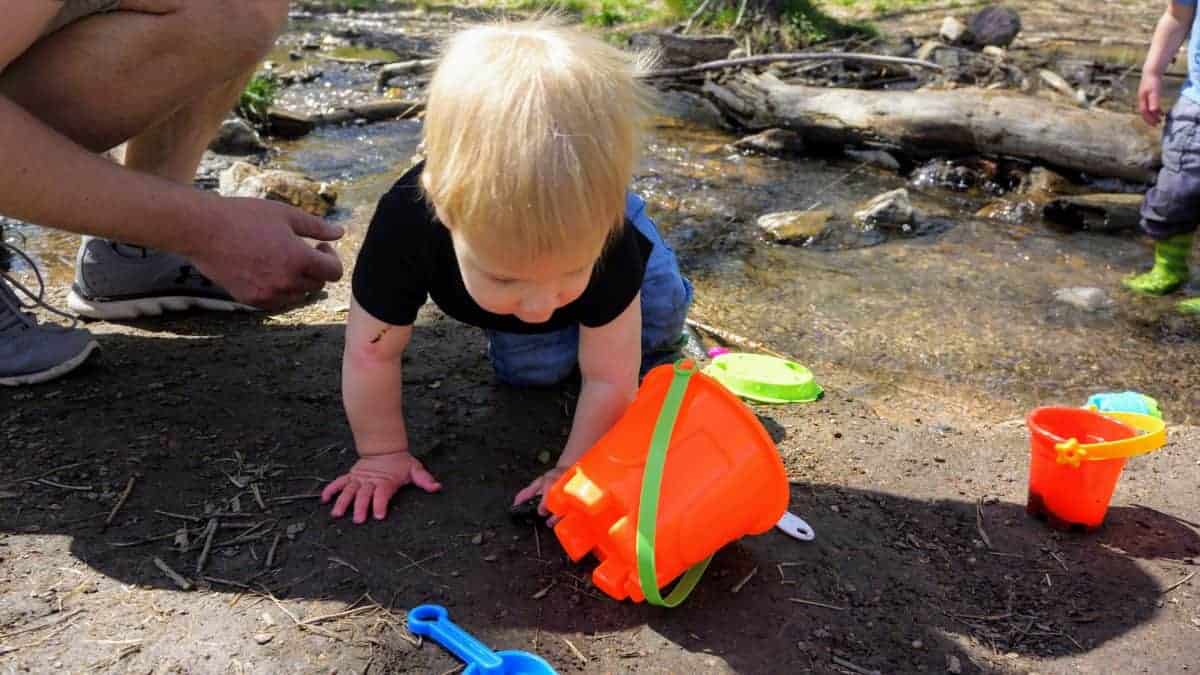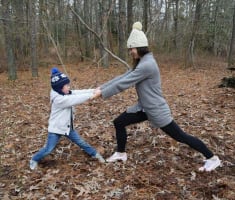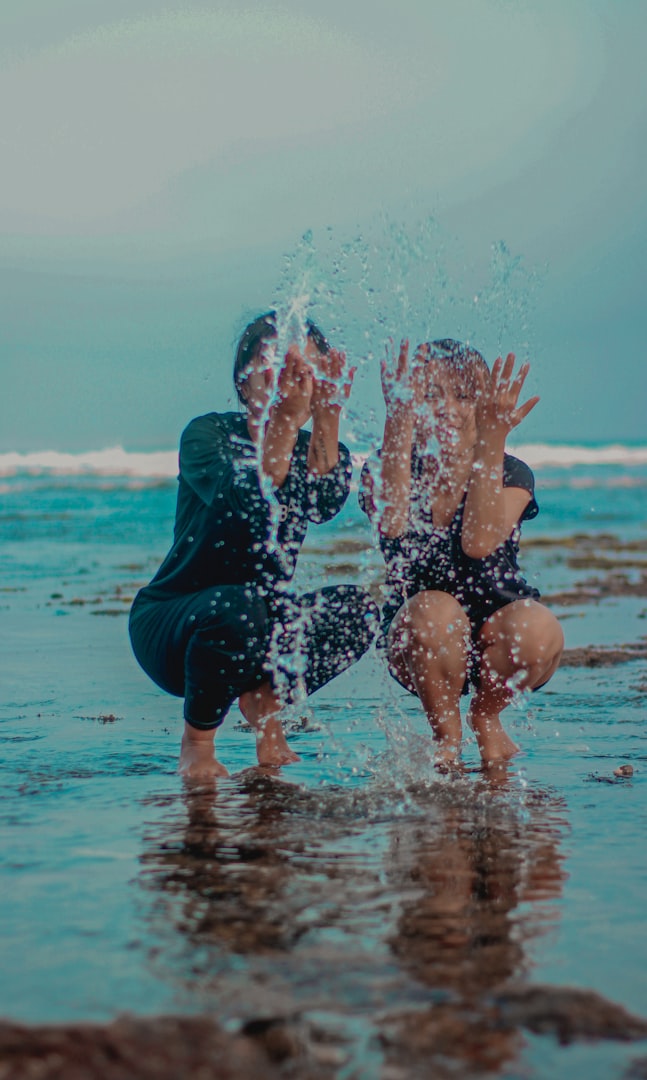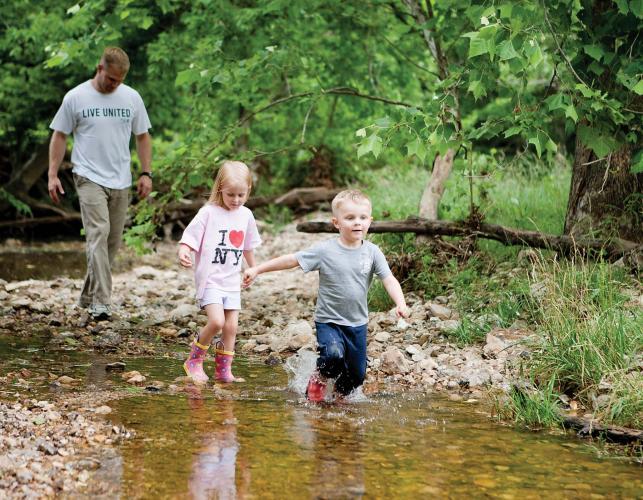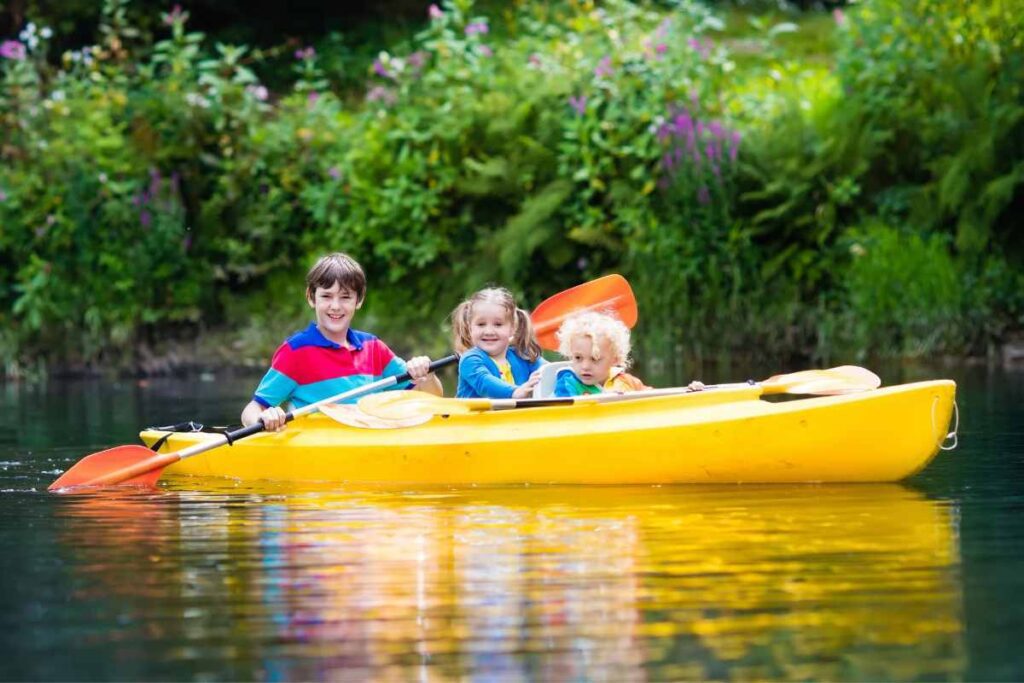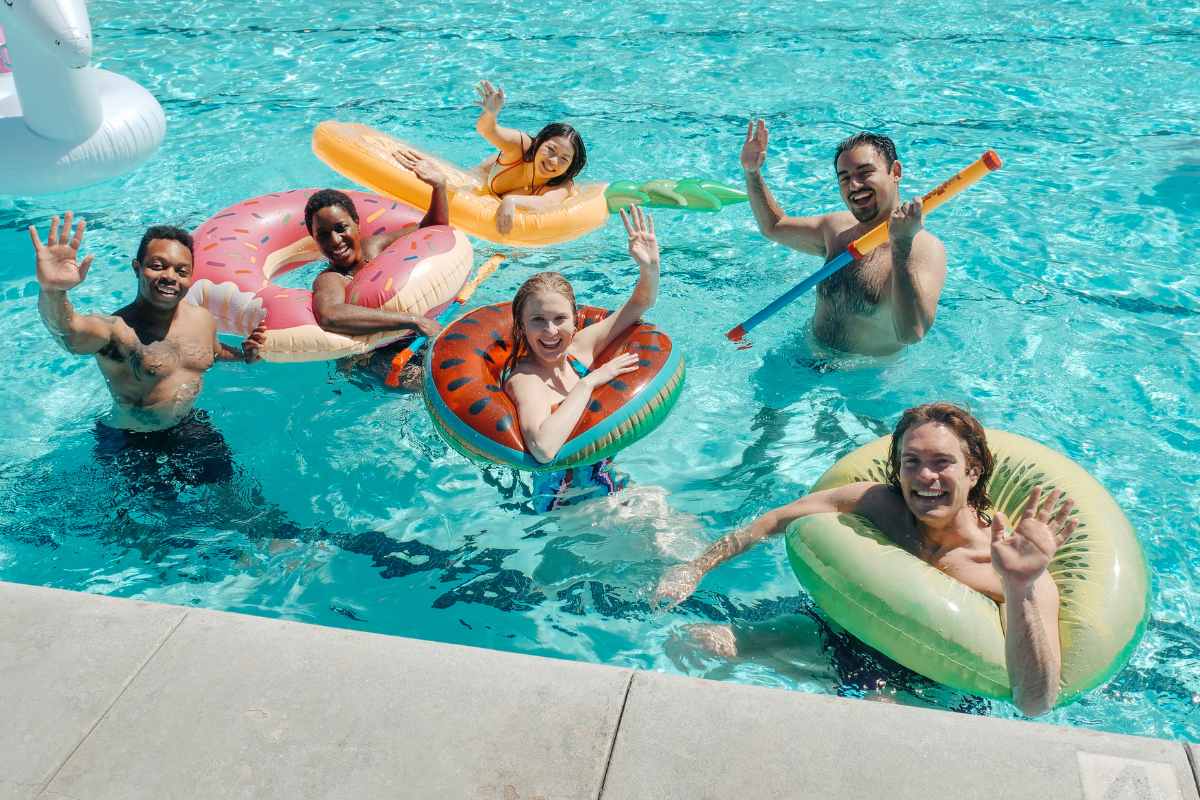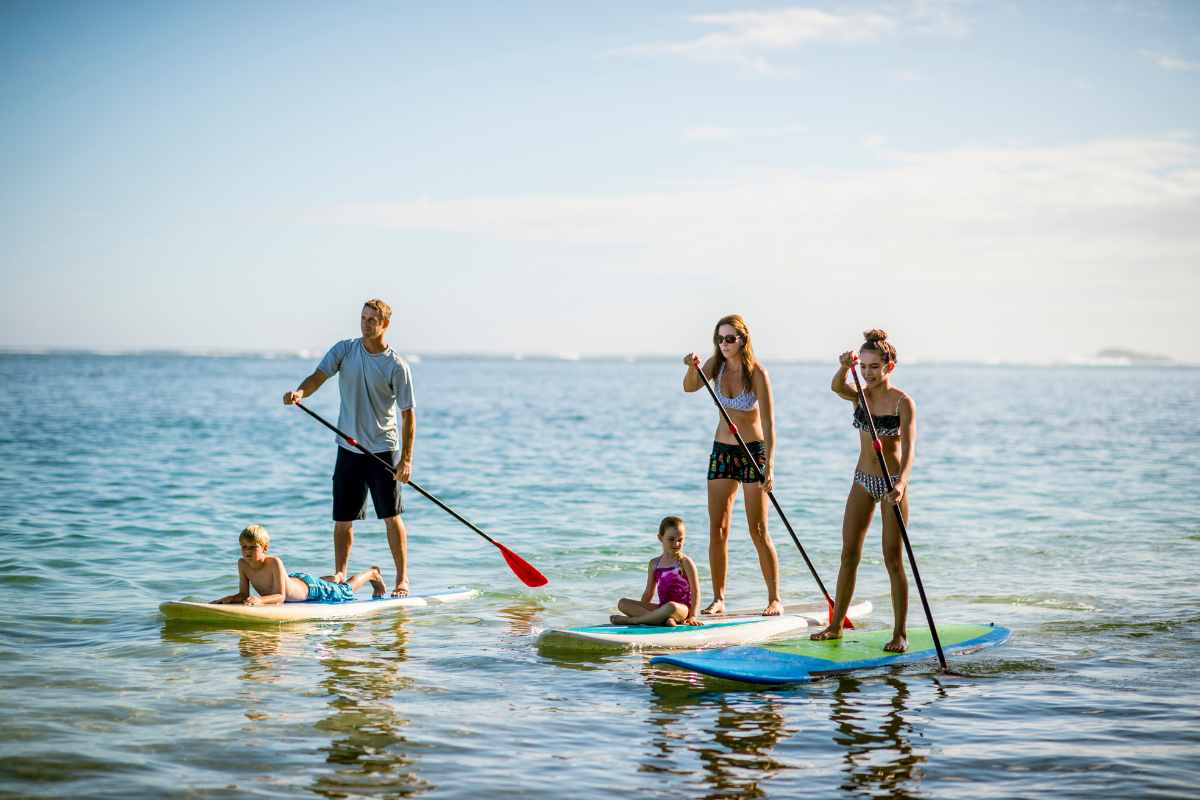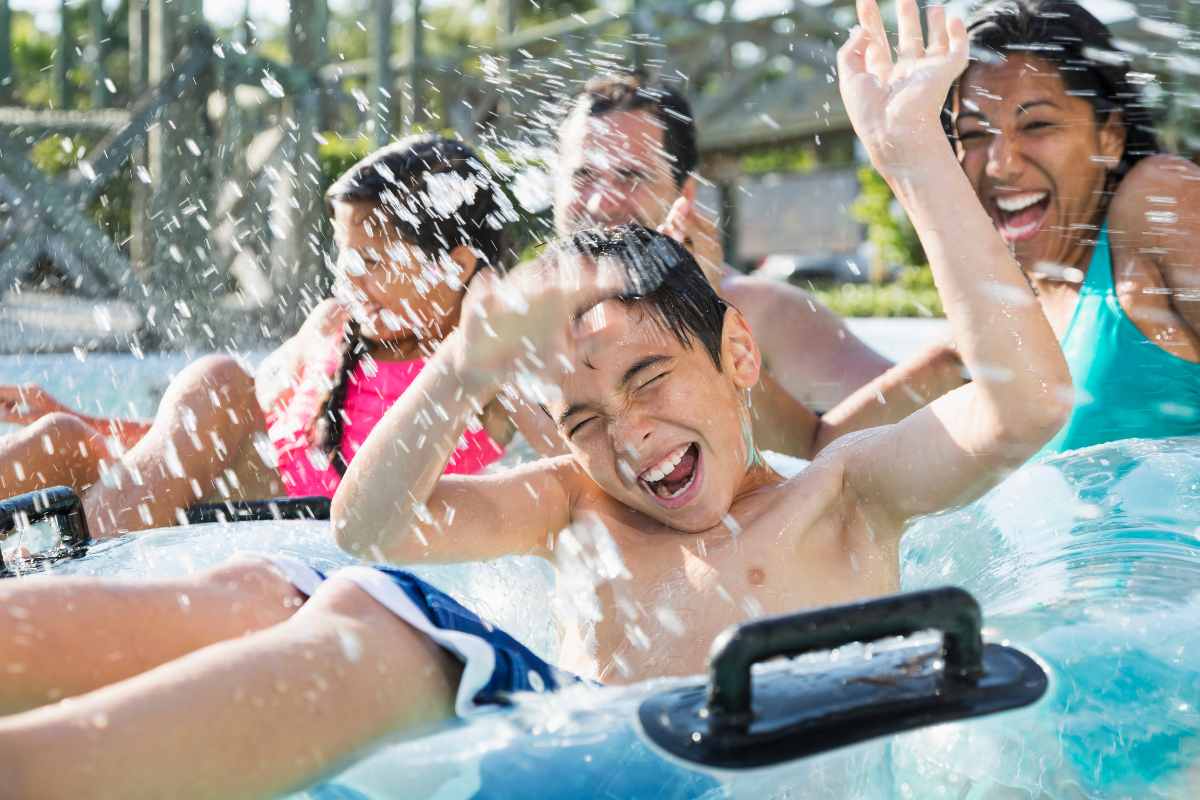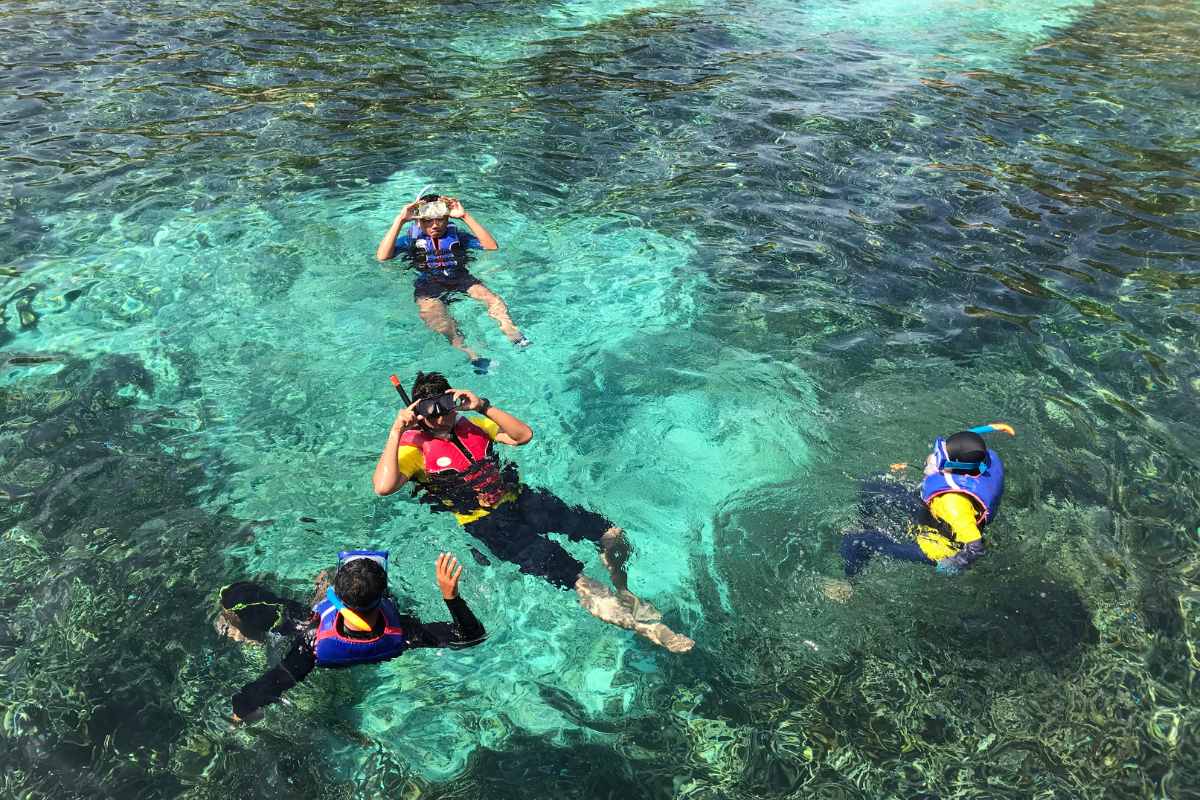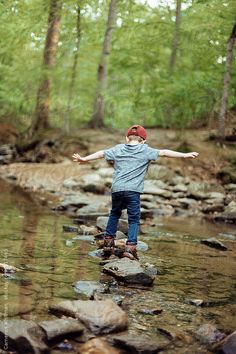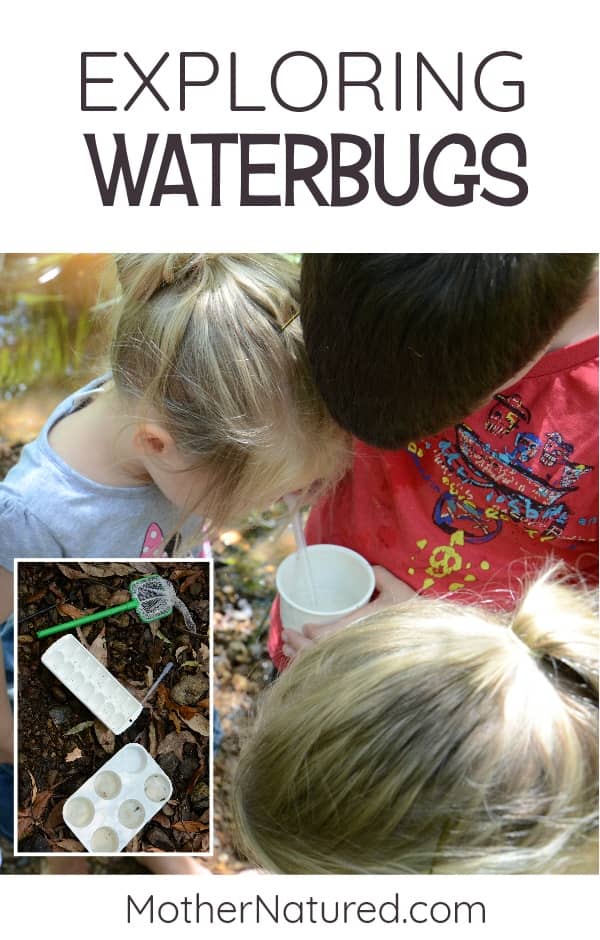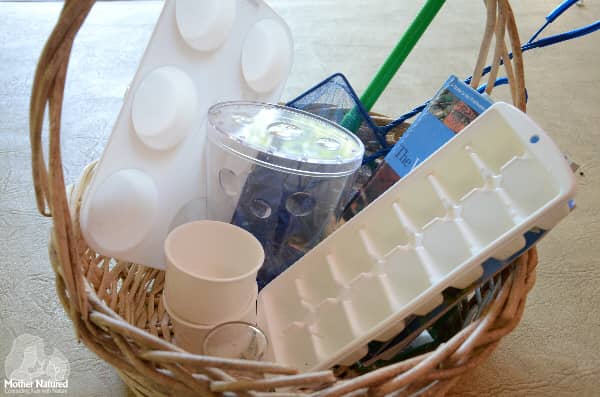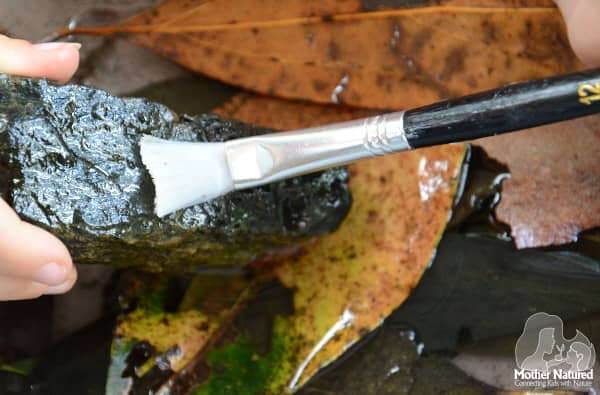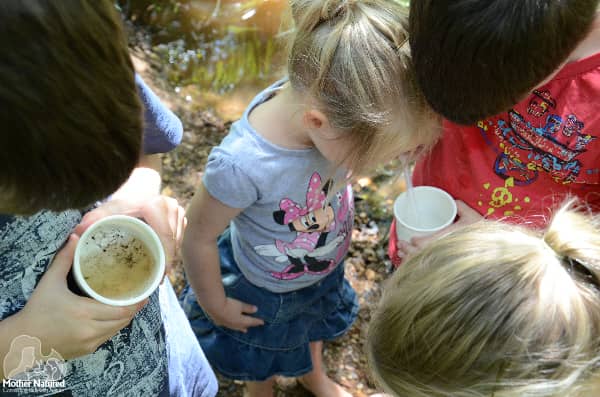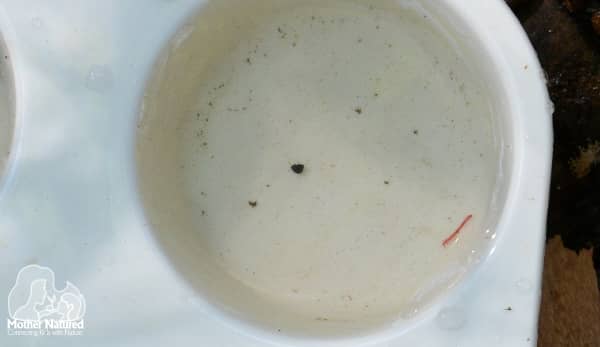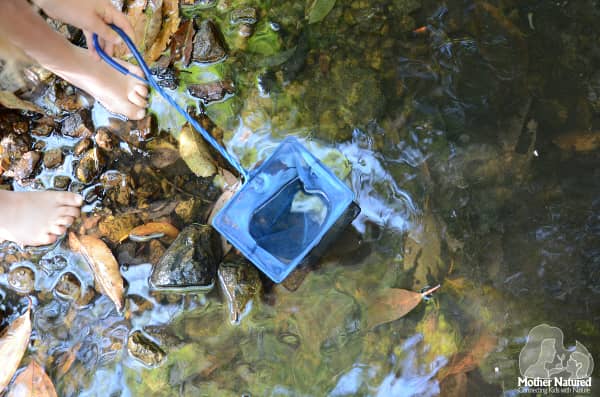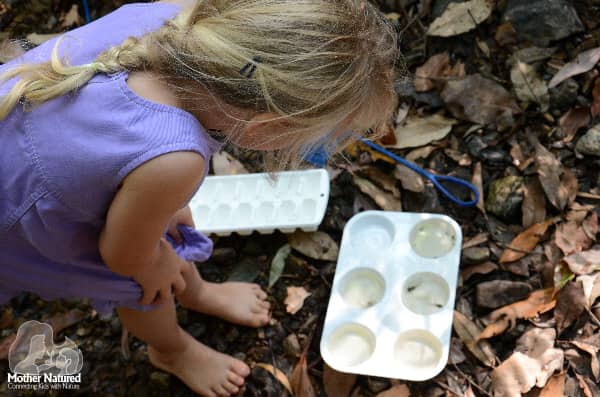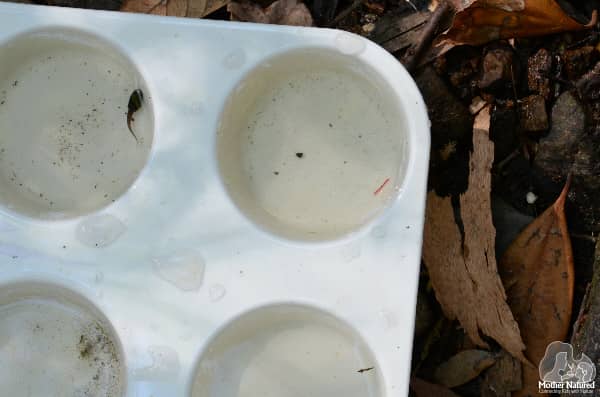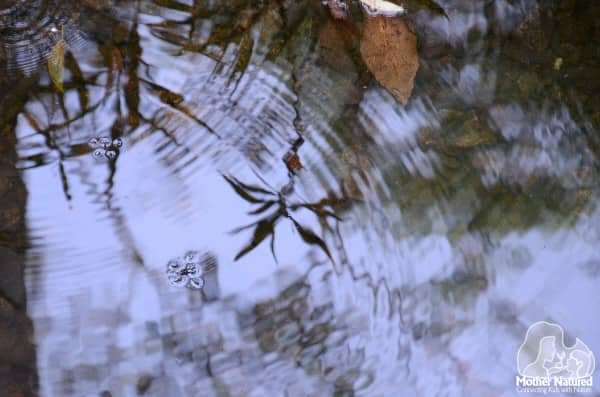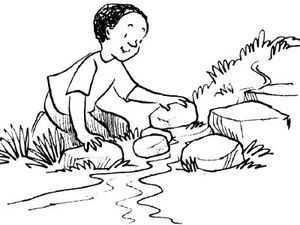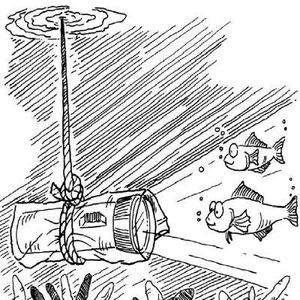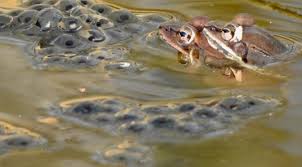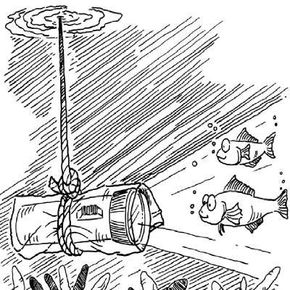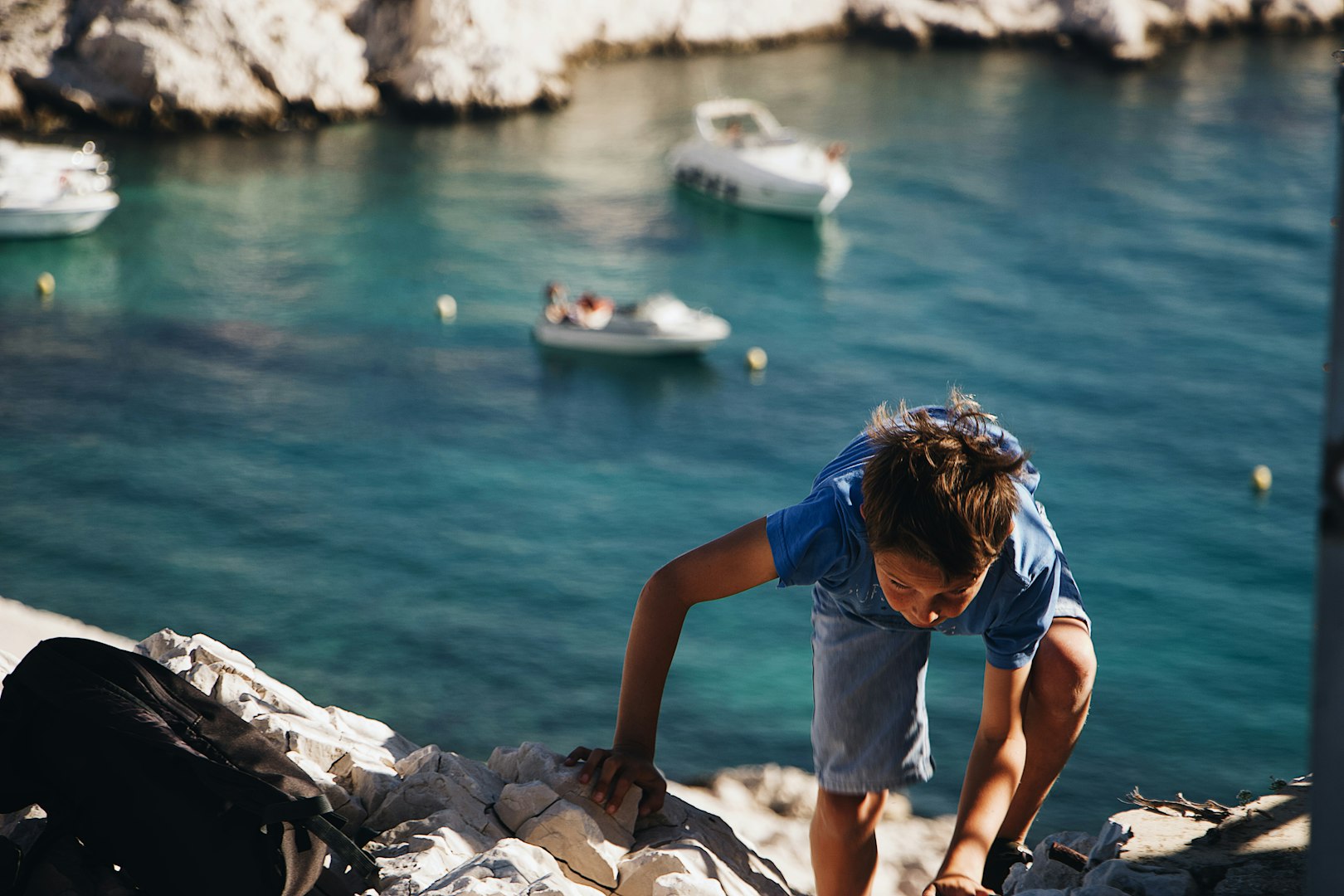IncredibleKids.com Outdoor Water activities Lake River Pond Creek Play
Water Play
Water play is a sensory activity where children explore, manipulate, and interact with water, often at water filled natural environments.
Water play can be a a calming and soothing experience. The gentle flow and sound of water can create a relaxing environment, helping children feel more at ease.
When children engage in water play, they tend to lose themselves in the activity and can spend long periods exploring and playing.
Superscript
Water Play in the Wild
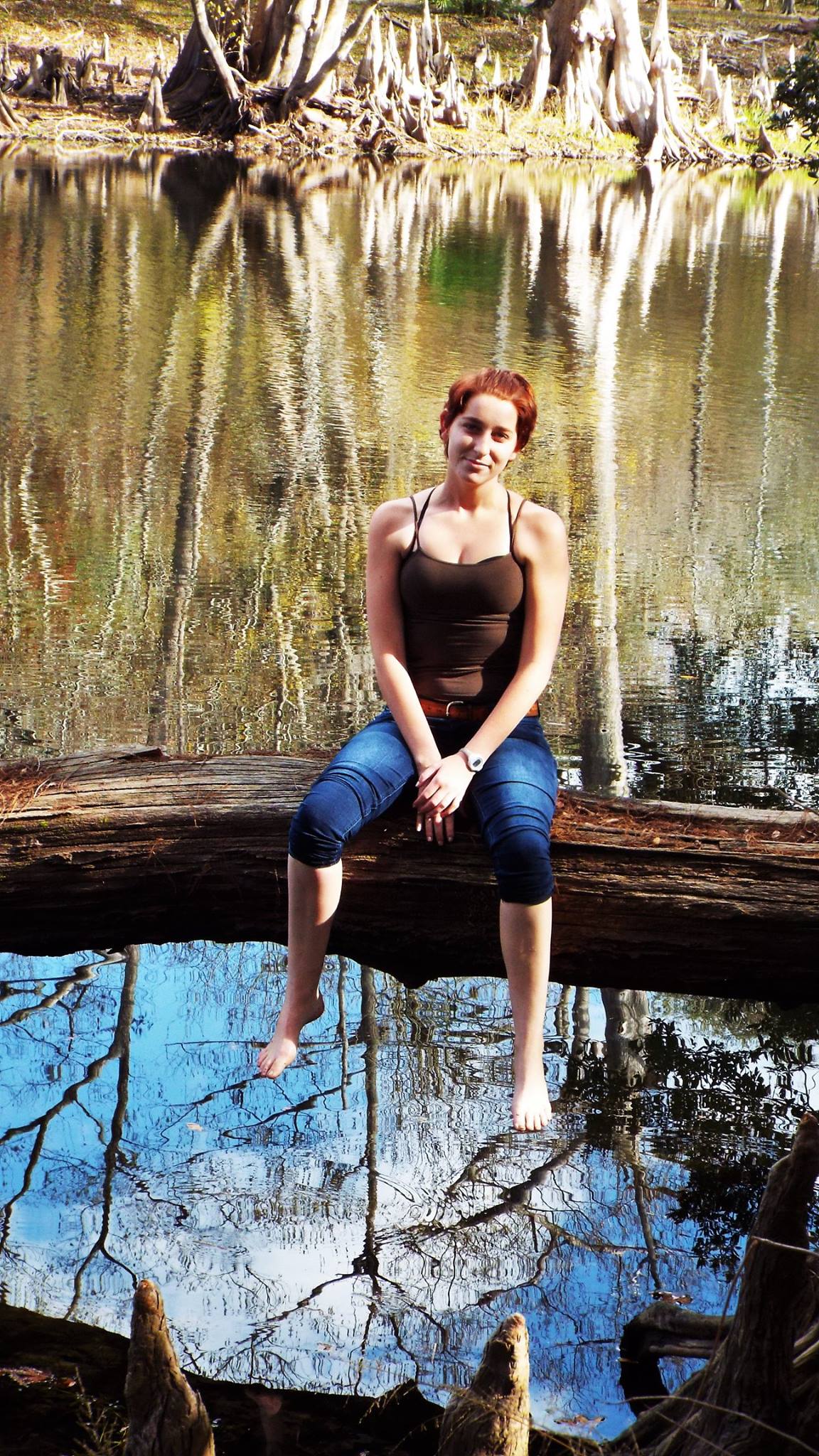
Benefits of Family-Friendly Water Activities
Engaging in family-friendly water activities offers numerous benefits beyond just having fun.
Here are some reasons why you should incorporate these activities into your family outings:
Physical Health
Water activities are a great form of exercise. Swimming, kayaking, and paddleboarding all provide a full-body workout, helping to improve cardiovascular health, strength, and flexibility.
These activities also promote coordination and balance, especially in children.
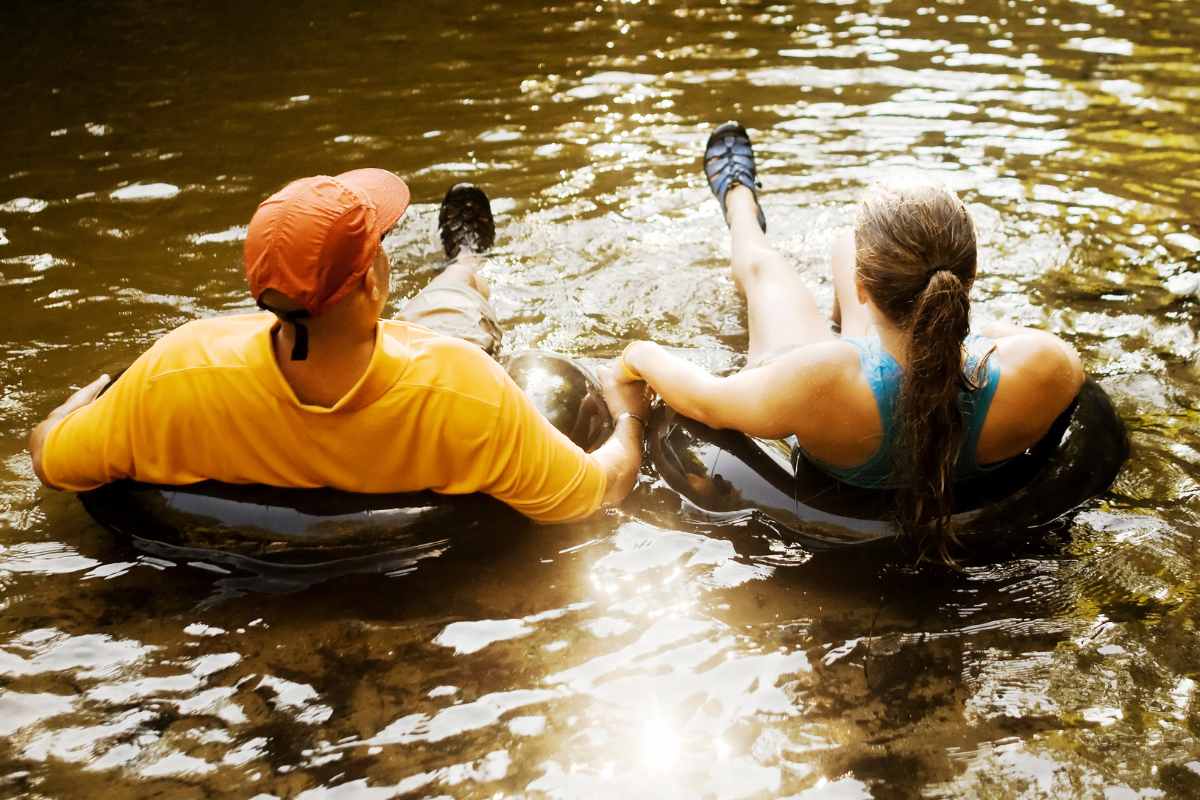
Mental Well-being
Spending time in and around water can have a calming effect, reducing stress and promoting relaxation.
The soothing sounds of water and the refreshing sensation of being in the water can help improve mood and mental well-being.
Family Bonding
Participating in family-friendly water activities fosters bonding and creates lasting memories.
Working together to paddle a canoe, playing games at the beach, or exploring underwater life can strengthen family relationships and provide opportunities for communication and teamwork.
Connection to Nature
Water activities often take place in beautiful natural settings, allowing families to connect with nature.
Whether it’s a serene lake, a bustling beach, or a scenic river, spending time in nature can enhance appreciation for the environment and encourage outdoor exploration.
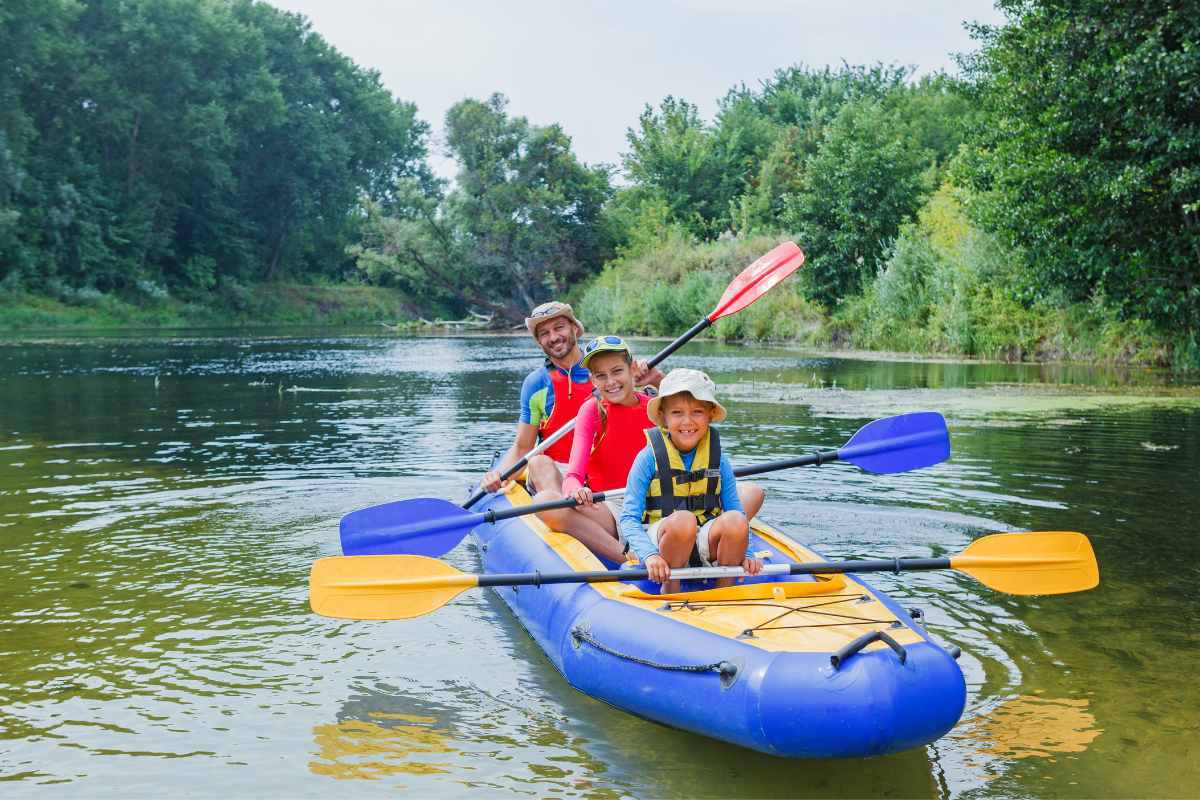
Safety Considerations
While family-friendly water activities are a lot of fun, safety should always be a priority.
Here are some tips to ensure a safe and enjoyable experience:
Supervision
Always supervise children when they are in or near water. Even if they are good swimmers, it’s important to keep a close eye on them to prevent accidents.
Life Jackets
Ensure that everyone wears a properly fitted life jacket when participating in activities like kayaking, canoeing, or tubing.
This is especially important for young children and anyone who is not a strong swimmer.
Swim Lessons
Consider enrolling your children in swim lessons. Knowing how to swim can greatly reduce the risk of drowning and increase their confidence in the water.
Sun Protection
Protect your family from the sun by applying sunscreen regularly, wearing hats and sunglasses, and seeking shade during the hottest parts of the day.
Hydration
Keep everyone hydrated by bringing plenty of water. Being active in the water can make you feel less thirsty, but it’s still important to drink fluids regularly.
Choosing Safe Locations
Select safe and appropriate locations for your water activities. Look for designated swimming areas, calm waters for kayaking and canoeing, and family-friendly beaches and water parks.
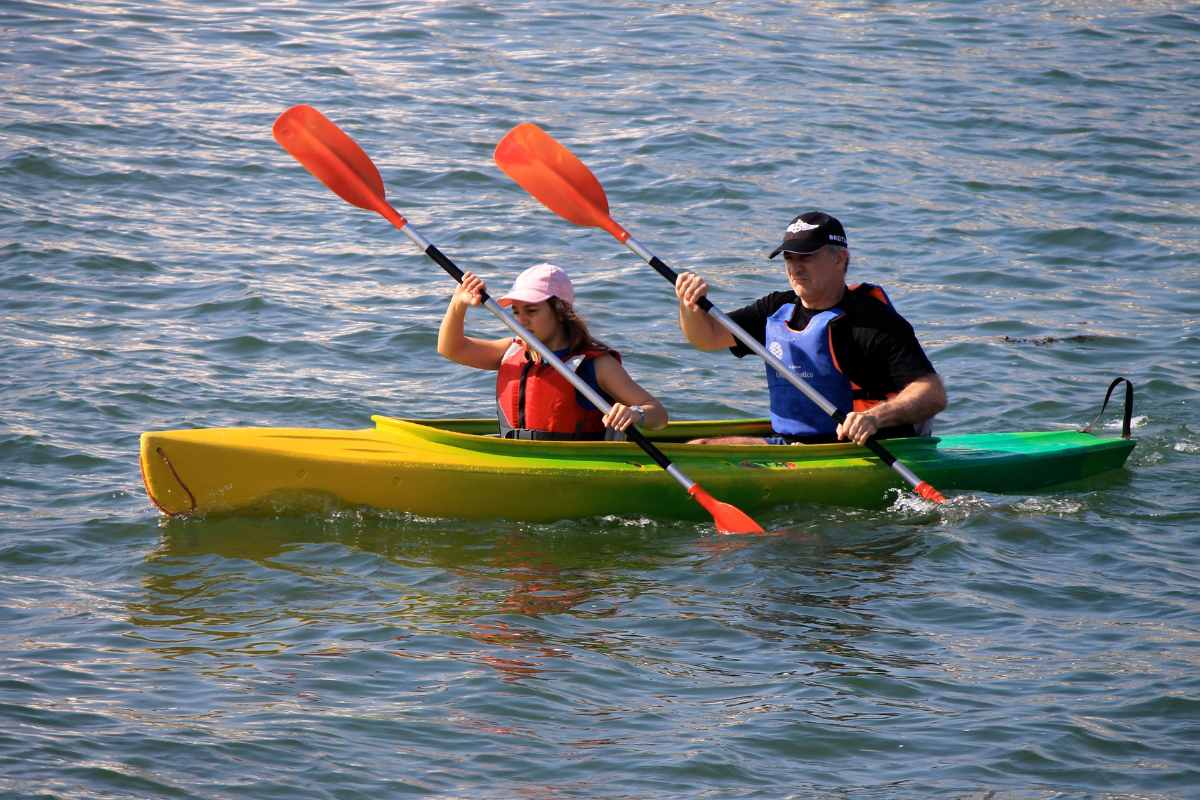
Planning Your Water Adventure
When planning a day of family-friendly water activities, consider the interests and abilities of all family members.
Here are some tips to help you plan a successful outing:
Research and Prepare
Do some research on local water activities and destinations. Check for any restrictions, safety guidelines, and facilities available at the location. Make a list of items to bring, such as life jackets, snorkel gear, sunscreen, and snacks.
Involve the Kids
Get your children involved in the planning process. Let them help choose the activities and pack their bags. This can increase their excitement and sense of responsibility for the outing.
Pack Wisely
Pack all the essentials, including towels, extra clothes, and water shoes. Bring a waterproof bag to keep your belongings dry, and don’t forget a first aid kit for any minor injuries.
Set a Schedule
Plan a schedule for the day, including time for breaks and meals. Make sure to allow for some flexibility, as unexpected events or weather changes can occur.
Capture the Moments
Bring a waterproof camera or use a waterproof case for your phone to capture all the fun moments.
Taking photos and videos can help preserve the memories and provide a way to look back on your adventure.

How to determine if your local natural water is healthy
Officially, spring doesn’t begin until March 19. However, the beginning of daylight savings time and a few days of warmer weather have those of us in Northeast Ohio feeling like its already here. That’s especially true for my daughter.
Between building forts, riding her four-wheeler, catching crayfish, swinging on the tire swing, jumping on the trampoline and wandering through the woods with her dogs, Vayda hasn’t had time for much that doesn’t offer the allure of an outdoors adventure. This spring she’s taken a special interest in a small stream that feeds into the larger creek in my parents’ backyard.
How to test the quality of Open Water for Swimming or Play
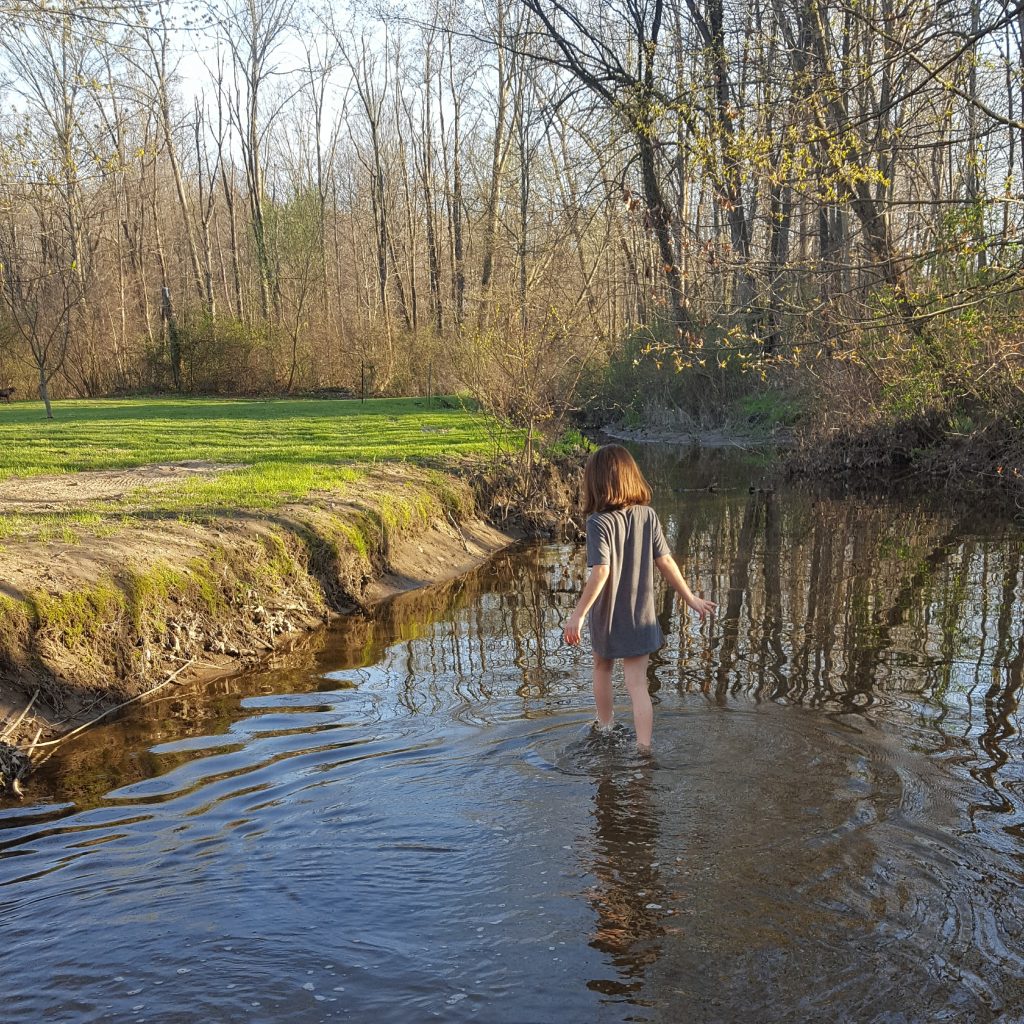
Watching her wade in the likely-cold water, I started to ponder how healthy the small stream and larger creek are. What indicates a healthy creek v. one that needs improvements to thrive? Determining whether your creek is healthy
There are a number of factors that can indicate whether or not a creek is healthy. By learning what to look for landowners can monitor the health of waterways cutting through their property and respond to any indications of impairment sooner.
Checklist
Riparian vegetation. Healthy vegetation along stream banks slow down erosion and provide shade, food and shelter for aquatic macroinvertebrates (such as insects, crustaceans (crayfish and others), mollusks (clams and mussels), gastropods (snails), oligochaeta (worms). Steep, bare spots along the edges of a stream may indicate stretches of increased erosion and decreased biodiversity.
Stream temperature. Temperature determines the kinds of organisms that can live in creeks and streams. Many freshwater fish, amphibians and invertebrates dwelling in streams require cooler temperatures to survive (under 70F). Additionally, warmer water temperatures can influence water chemistry as chemical reactions increase at higher temperatures.
Water color. Clear water is the most desirable color but doesn’t necessarily mean clean as some pollutants are not colored. Brown water is an indication of sediments in the water, but not necessarily a bad sign. All streams contain sediment suspended in the water, determining their turbidity level. Many turbid streams are abundant with life. Green water is generally a sign of excessive algae and poor water quality. A rainbow or oily sheen on the water is an indicator of poor water quality.
Algae growth. Scattered algae indicate a healthy waterway, whereas, matted or hairy algae can mean poor health. An algal bloom indicates excess nutrients, which may have come from fertilizers, manure or leaf litter.
Foam. Some waterways have a natural foam that smells earthy or fishy and will appear white, cream-colored or brown. It will appear more pillowy than sudsy. Foams that smell like soap or perfume and are white and sudsy in appearance come from pollution from detergents.
Riffles, runs and pools. A mix of riffles, runs and pools in a waterway provides the ideal habitat for aquatic life. Riffles are the shallow sections of a stream where the water breaks over cobbles, boulders and gravel. Runs are deeper sections of streams where water is flowing rapidly, generally downstream from riffles. Pools are the deepest and slowest moving sections of a stream.
pH level. The ideal pH for a stream is between 6.5 and 8.5, with the optimum pH around 7.4. Water that measures lower than 6.5 is too acidic and water that measures over an 8.5 can make a creek inhospitable to aquatic life.
Outdoor Water Games
and Activities
For Any Setting
and Activities
For Any Setting
There is nothing more magical than spending the whole day out in the sun, playing water games with your family! Summer is such a fun time of year, the sun is out, schedules are a little more flexible and we get some extra opportunities to play!
Summer also means that kids are looking for activities to help fill their days and what better way to keep them busy and beat the heat then to play their days away with these 75 Outdoor Activities! We have rounded up the best summer fun water ideas out there to keep your kiddos splashing, playing and enjoying the water all summer long!!
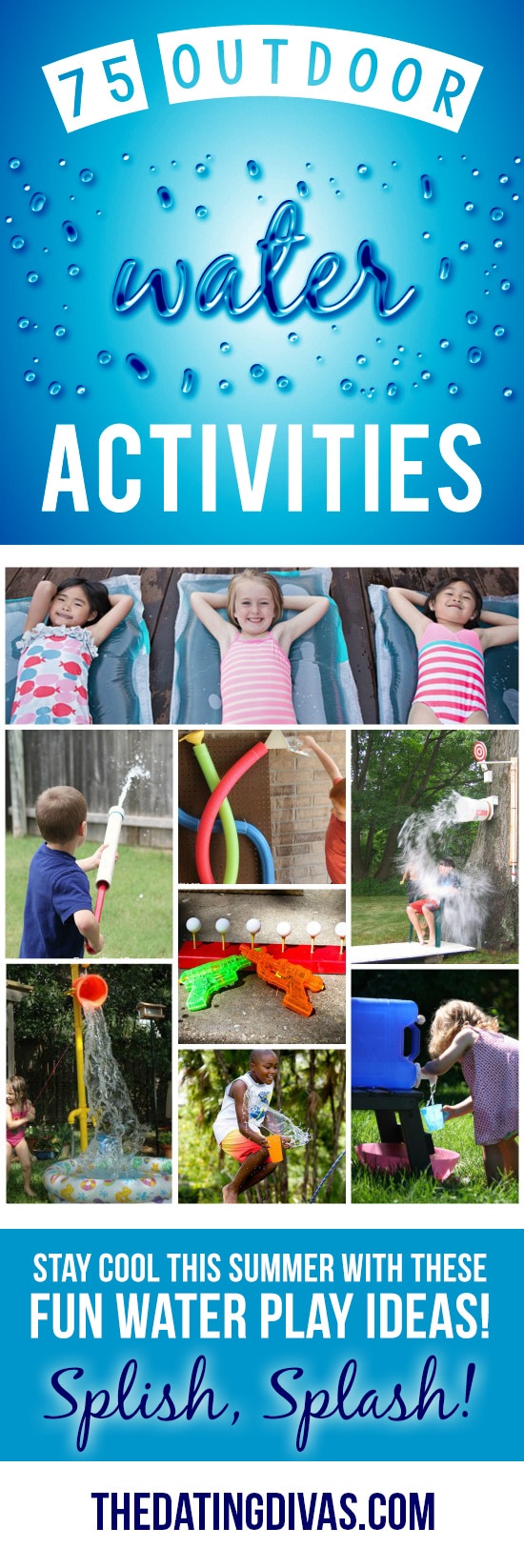
These 75 activities can be used in any aquatic setting or backyard.
Click Here
.
Water Sports in a Park Setting
National parks offer a wide array of watersports, from kayaking and canoeing to boating, rafting, and even snorkeling. Many parks, like Acadia, Big Bend, and Olympic, are known for their diverse aquatic activities according to Tripadvisor. You can also find unique experiences like airboat tours in the Everglades or thermal baths in Hot Springs National Park.
Here's a more detailed look at some popular options:
Kayaking & Canoeing:
Big Bend National Park: Explore the Rio Grande River by kayak or canoe.
Acadia National Park: Enjoy paddling along the Maine coast.
Yosemite National Park: Paddle on the Merced River.
Yellowstone National Park: Backcountry kayaking is available.
Rafting:
New River Gorge National Park: Experience thrilling whitewater rafting.
Grand Canyon National Park: Raft the Colorado River.
Other Water Activities:
Biscayne National Park: Snorkel or scuba dive among coral reefs.
Everglades National Park: Take an airboat tour.
Hot Springs National Park: Enjoy thermal baths.
Redwood National Park: Surf at Enderts Beach.
General Tips for Watersports in Local Parks:
Check for rentals and guided trips:
M a ny parks offer boat rentals or guided tours for various water activities.Prioritize safety:.Be aware of water conditions, weather forecasts, and any specific regulations for the park.
Respect the environment: Follow Leave No Trace principles to minimize your impact on the park's natural resources.
Related Content
Beach and Shore Fun:
12 Family Beach Games to Have Fun in the Sun Beach Bag Essentials Take Great Photos of Your Kids at the Beach Exploring the Shore and Beach- Our Activities for Families Website Catch and Release of Wild Animals

10 Apps Websites for Bird Identification
Birds are often seen near water- so here are10 apps for kids to learn bird identification, wonderful nature science learning tool for kids from preschool to high school. | STEM
Easy to Make Homemade Toys for Water Play
On our most recent visit, I brought along a few simply made items to add to his fun and learning experience. Before we left, we gathered a few sticks from the backyard and made a simple fishing pole with a larger stick he found and some twine, a little raft, and a sand sifter from some tulle and an old embroidery hoop that I had.
He enjoyed playing with all of these homemade toys, but the sand sifter was his favorite. Each time he sank the sifter under the dirt in the pond and came up with something, he got so excited! He also used the sifter to collect all of the treasures he found like small plants, algae and different shells.
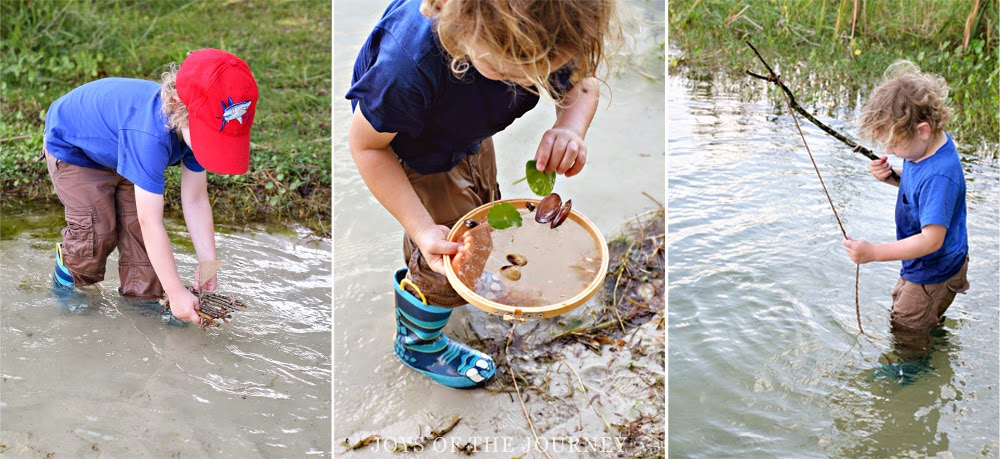
For the sand sifter, I cut out two circles from some tulle a little larger than the 7 inch embroidery hoop. I took the hoop apart and placed one circle of tulle on top of the inner hoop and one on the bottom and stapled them to the hoop so they sandwiched it and then put it back together. That’s it! So simple and my little guy enjoyed it so much!
He used it to sift, to collect things and for catching minnows with it like a net. Pond play invites children to use their imaginations while playing and promotes creativity while learning to appreciate nature. My little guy put different found treasures on his wooden raft and pulled them around the pond. He caught imaginary fish, sharks and dolphins with his fishing pole and had a blast just splashing around in the water and playing with the sand!
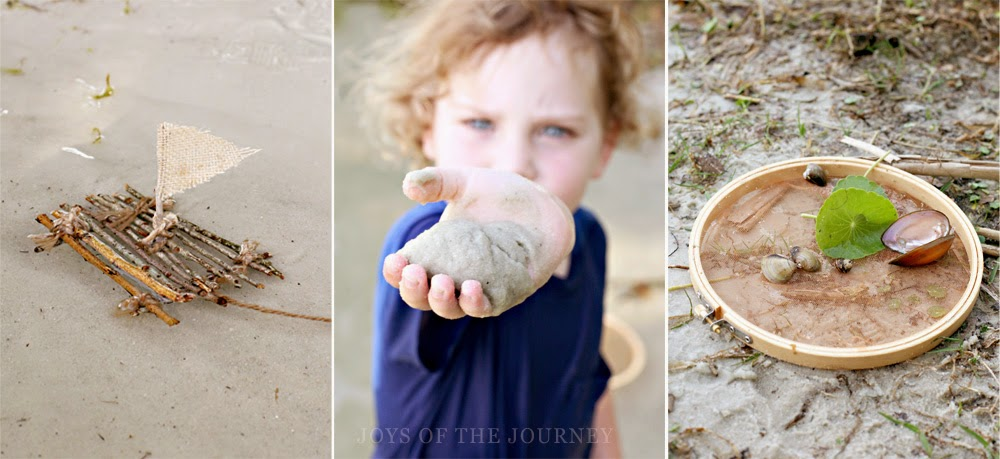
MAKE IT SPECIAL
Take pictures, laugh a lot, be slow and playful, do whatever it takes to make you and your baby super happy during beach time. It won’t take much for your little one to fall in love with the truly remarkable beauty of spending a day with family at the beach.
Follow your child’s interest in exploring the lay of the land, and by being open to their natural curiosity, you can definitely help your child to develop a healthy love of not just the beach but of the great outdoors. For more information on water and beach safety, check out these safety tips from The American Red Cross. Be sure to visit your state tourism board website to find the best family friendly beaches near you.
Beach & Shore Toys That Don’t Break the Bank
What are the best items to use from home at the beach for kids? Grab your Top 5 Household Items for Beach Toys list.
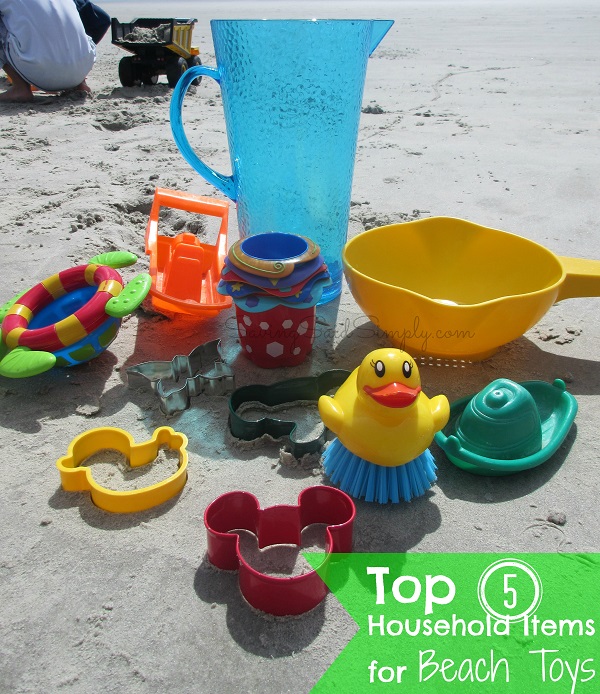
Top 5 Household Items for Beach Toys
I’ve had this happen multiple times. Your kids are bored with your beach toys. You forgot them. Or worse…they got “lost at sea.”
Instead of paying for more of them, you might have some of these ordinary household items around and collecting dust. Here’s my list of the Top 5 Ordinary Household Items that Make GREAT Beach Toys. As a Florida beach mom, these are must haves!
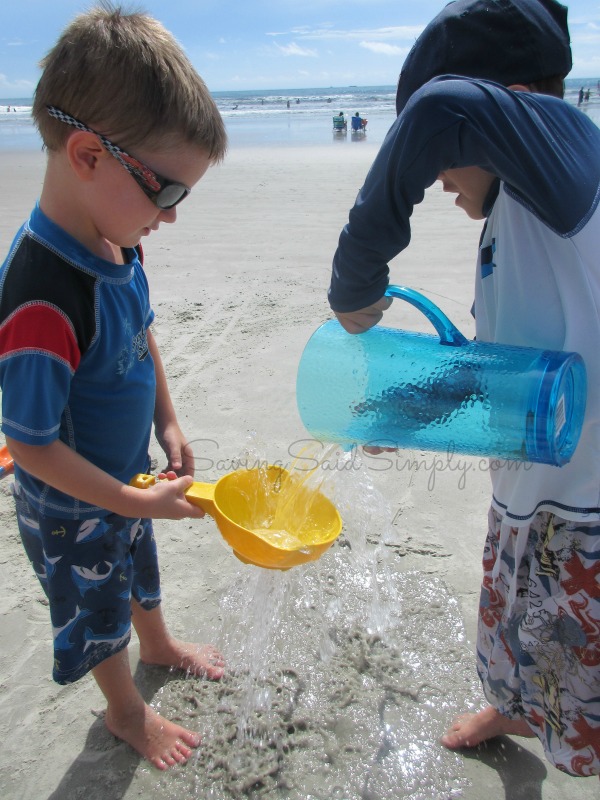
1. Strainer
Great for finding new treasures, collecting shells or straining water and sand!
2. Pitcher
A pitcher is wonderful! Take a plastic one to hold your new toys, fill with sand, water or both!

3. Cookie Cutters
Make new sand shapes with cookie cutters! Bring your child’s favorite!
4. Bath Toys
Who says bath toys are for home only? Take some old ones to the beach and give them life again!
5. Ice Cream Scoop or Measuring Scoop
Can’t grab sand without a digging tool!
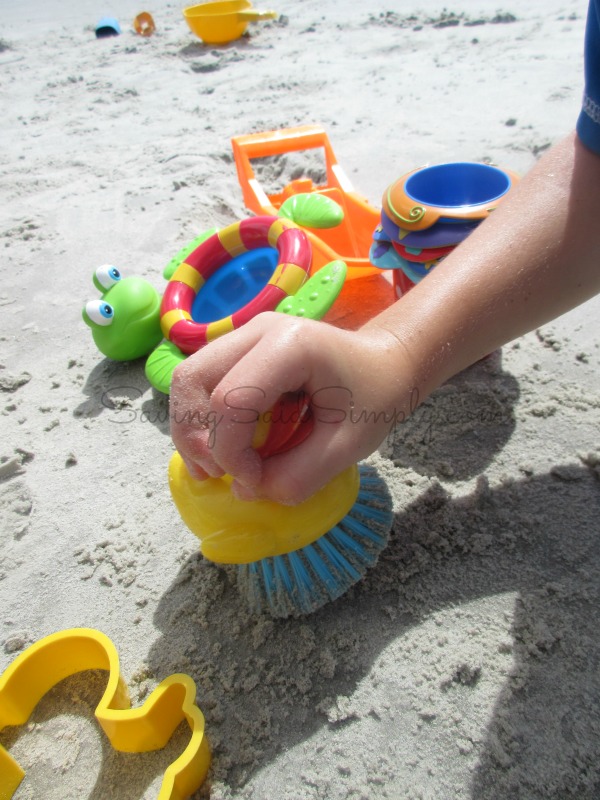
6. BONUS – Scrub Brush
I loved the idea of kids cleaning up the sand. Make new patterns, erase footprints or just smooth out an area for play.
How to Make Plastic Bottle Sand Scoops.
It’s cold here right now. Yesterday morning it was -2 degrees C in my kitchen (which is possibly because one wall and the ceiling are still made of blue tarps).
I think I was a hibernating animal in my past life, because when it is dark and dreary outside I just want to shut all the doors, pull down the blinds and keep everyone in. I know that’s not good for us, especially the kids, so I try to get outside every day, even if it is just a five minute walk up the drive to the letter box, or a a quick run around the play group at school pick up, but some days I really REALLY don’t want to!
Despite the freezing bite to the wind and frosty mornings, the sun has been shining here this week which has just been blissful. I can cope with the cold if the sun is shining!
So to encourage everyone outside into the sunshine, and to give the boys something to do while I potter in the garden, this week we resurrected our sand pit and made some plastic bottle sand scoops!
I’d been collecting various plastic bottles for a while now, knowing they’d be good for something (in the past we’ve made these cool fairy houses) and they were perfect for making scoops!
How to Make Plastic Bottle Sand Scoops.
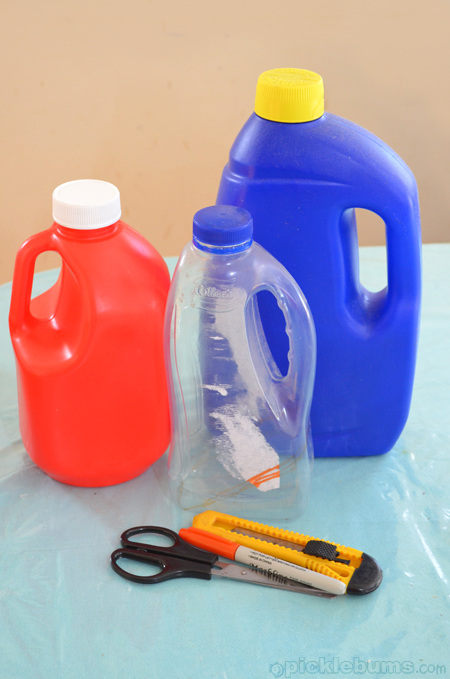
You’ll need:
Plastic bottles in any shape or size, with the lid.
Scissors and/or a craft knife
A permanent marker
Mark a line across the side of the bottle – from the handle down to the side. Make sure you leave enough plastic around the handle to keep it intact and strong, and cut down far enough on the side to make sure there is no lip left from the bottom of the bottle.
Make a starting hole with the craft knife and then cut along your marked line with scissors or continue with the craft knife. I find scissors easier to control, but some thicker bits of plastic may need a craft knife to get through.

You can tidy up your cut after you’ve made it… cutting off any sharp edges and making corrections till you get the perfect looking sand scoop.
You can screw the lids on tight or take the lids off all together and you have a scoopey kind of funnel. You could have lots of fun if you melted holes in the lids and used the scoops with water or fine sand too.
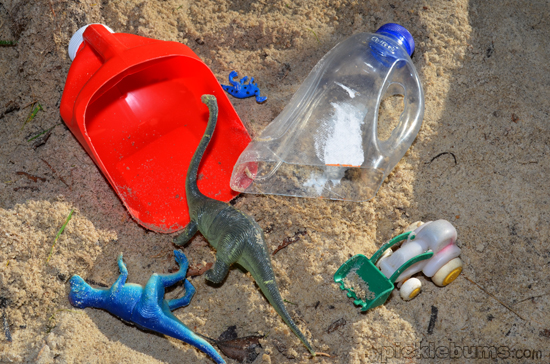
Our sand pit has definitely seen better days. It isn’t used as often these days with the big kids preferring dirt and plants and potion making to the sand pit. So the boys and I had to pull out a good few weeds before we could try out our scoops. I also dug over the sand pit with my big proper garden shovel. Fluffing up the sand makes it a lot easier for the kids to dig and scoop, it’s worth doing every now and then regardless of how neglected your sand pit is.
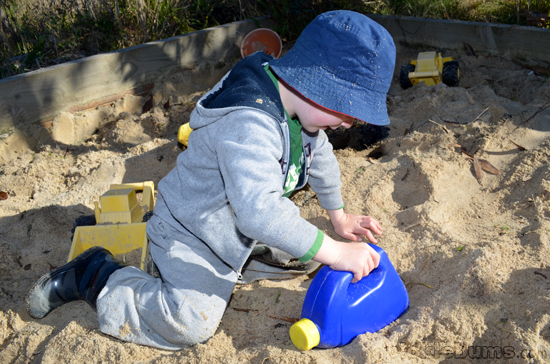
Now get out there and enjoy the sunshine while you can!!
Talking with Your Child
Talking with your kids about the different plants and animals they discover enhances their learning experience. My little guy found clams, snails, different kinds of algae and small lilypads. We talked about the animals that once lived in the shells and how the plants on the bottom of the pond help them hide from predators and keep them safe.
Incorporating Related Children’s Books
Books also help implement learning about the pond’s environment. Read a few before you go or bring a guide like this one with you. My little guy also enjoys this great coloring book that has the most beautiful pond coloring pages.
SHORE TIME ACTIVITIES
My YMCA Training Curriculum Featured on How Stuff Works:
10 Earth Day Activities to Celebrate Our Planet - HowStuffWorks
Animal Activities
Have fun and enjoy discovering all the wonders of wild water play !
We sure did!
Projects for Water Play & Exploration
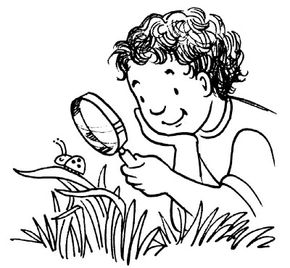
Have you ever wondered what goes on between blades of grass, or what you can find flowing along with the water in a stream? An easy outdoor science activity for kids can help you find the answers.
There's a whole world out there, waiting to be investigated and explored.
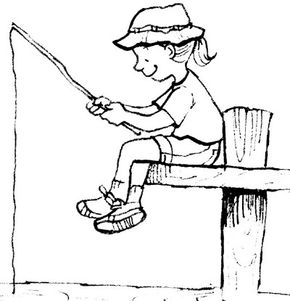
There's lots to do at the lake or river--watching for a nibble with our homemade fishing pole!
Pack up the car and head for your local beachfront -- it's time for some fun with lake activities for kids.
There are plenty of crafts and activities for the family to do on a mini-vacation at the local beach. These activities will teach you about the local wildlife and might even enable you to catch some fish.
It's Huck Finn all over again with this easy-to-make fishing gear. Find out how to make a homemade fishing rod.
Keep reading to learn how to find out what's going on underwater!
For more fun outdoor activities, check out:
Homemade Fishing Rod
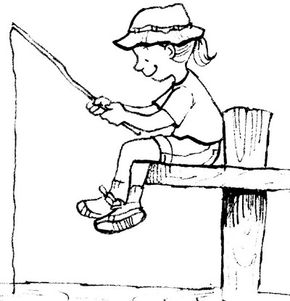
You'll get nibbles aplenty with this homemade fishing pole!
Your child doesn't need expensive equipment to catch fish. The fish don't care if you have a homemade fishing rod or a store-bought one.
What You'll Need:
Sturdy stick, four to five feet long
Fishing line
Safe scissors
Fish hook
Plastic bobber
Bait
NOTE: The best type of stick for your fishing rod is strong, yet slightly flexible. Bamboo, about one half-inch thick, would be ideal. Find something similar in your own yard or campground.
Step 1: Tie one end of the fishing line to the handle (use the thicker end of the stick as the handle). Wrap the line in a spiral around the stick until you reach the tip.Tie the line firmly to the tip, but don't cut the line yet.
Step 2: Unroll the line about a foot longer than your stick, and cut it off the roll. You should have a continuous length of fishing line extending from the handle of your stick down to the hook. (That way, if the fishing rod breaks in the middle, you still have the line in your hand.)
Step 3: Tie a hook to the end of the line. Fasten a bobber to the middle of the line. You'll want to use a ball-shaped red and white bobber with a spring-loaded hook that will fasten it anywhere on the line.
Now you're ready to fish! For bait, use worms or other material from a sporting goods store.
Make an Awesome Aquascope

Awesome Aquascope
Have you ever looked at the surface of a pond or stream and wished you could see what was going on down there? With this awesome aquascope, now you can.
What You'll Need:
Half-gallon milk carton
Knife
Plastic wrap
Large rubber band
Heavy tape
How to Make an Awesome Aquascope:
Step 1: Take an empty half-gallon milk carton, and cut the bottom and top off the carton.
Step 2: Stretch clear plastic wrap over one end of the carton. Use a big rubber band to hold it in place tight, or use heavy tape. You just made your own aquascope.
Step 3: Head for that pond or stream. If the water is deep, have an adult along with you. Hold the plastic-covered end of your aquascope just under the surface of the water, and look through the other end. What's going on down there? Be careful not to harm any of the wildlife.
If the aquascope still doesn't get you a close enough look, keep reading to learn how to observe water organisms with a pond net instead.
Bug Dipping Net
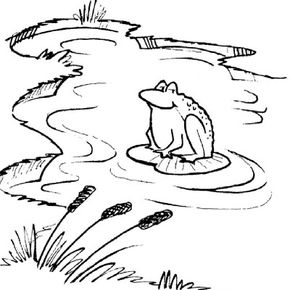
Bug Dip Net
One way to explore water life is to create a pond or bug dip net and catch living organisms for observation. Don't forget to return the animals back to the pond when you're done.
What You'll Need:
Stiff wire coat hanger
Broomstick- stick from the woods or a dowel
Heavy wood staples (the kind that are hammered in)
Tape measure
Waterproof tape
Safe scissors
Cheesecloth or wide-mesh nylon net
Needle and thread
Tall rubber boots
Large metal pan (such as an aluminum roasting pan)
Bucket
How to Make a Insect or Bug Dipper Net:
Step 1: To make a dip net, bend a stiff wire coat hanger in the shape of a D, leaving the hook in the middle of the straight part of the D. Straighten the hook and use heavy wood staples to fasten the straightened hook to the end of a broomstick.
Step 2: Fold the wire back over the last staple. Wrap the end in waterproof tape.
Step 3: Measure the distance around the wire frame. Cut some cheesecloth that width and 18 inches long.
Step 4: Sew the ends together into a tube. Stitch one end of the tube shut. Sew the open end of the tube to the frame by turning the edge over the frame then stitching the fabric to itself.
Step 5: To use your dip net, put on rubber boots and wade into a pond (with an adult along). Be careful not to wade in water deeper than your boots.
Step 6: Hold the net in the water with the handle upright and the net resting on the pond bottom. Have a bucket with a little water in it ready
in the other hand.
Step 7: Move slowly through the water and gently move the net up and down. Stop now and then and dump the contents of your net into the bucket. After you've done several nettings, come ashore and dump the bucket into a wide pan. Add a little water so your animals can swim.
Step 8: When you are done, return the animals to the pond. Some pond animals (such as native turtles) are endangered because of over-collection.
Put on your thinking caps -- continue on the next page to learn all about the earth's oceans and rivers.
What's in the Water?

Find out what's in a river with a DIY strainer.
You'll be amazed by all the things that travel down the watery highway of a creek! Make this gadget and see what you can catch.
What You'll Need:
Wire coat hanger or piece of strong wire
Screen or mesh
Duct tape
Step 1: Bend a wire coat hanger into a rough circle.
Step 2: Take a piece of old screen, and bend it around the coat hanger. (Be careful not to stick yourself with the screen. You may want to wear work gloves or gardening gloves while doing this.)
Step 3: Apply duct tape to hold the screen in place.
Step 4: Go to a creek or stream with an adult. Put your screen into the current and hold it there for a few minutes.
Step 5: Take out the screen and see what the current has carried onto it.
You might find seeds that will land on the creek's bank and grow into plants. Or, you might find water animals such as insects, minnows, or crayfish. (Put them back in the creek right away, so they stay alive.)
You might even find something somebody lost a long way upstream!
The next science activity will put you in the mindset of a famous explorer.
Exploration Activity
Discover your own uncharted territory with this fun and educational exploration activity! You can be an explorer when you visit a river, stream, lake, pond, or tide pool.
What You'll Need:
Notebook
Pen or pencil
In 1804-1806, Meriwether Lewis and William Clark were the first European-Americans to travel across what is now the western United States.
They kept journals full of notes and drawings to tell the rest of the world about all the strange, new things they saw: plants, animals, mountains, and much more.
How to do the Exploration Activity:
With an adult, visit a body of water near your home. Imagine that you are an explorer.
Look closely at the plants, animals, rocks, and other natural elements. Tell about them in a journal.
You can even make a map of the area for explorers who will follow in your footsteps. Don't forget that explorers may find all kinds of surprises. Meriwether Lewis met a grizzly bear one day, and had to jump into a river to escape!
Keep reading for a science experiment that shows what can grow in places you may not expect.
Kids can explore their prospects and see if they pan out with the activity on the next page.

See which things pan out in this lake and river activity.
When curious kids examine a riverbed, they'll be fascinated to see how things pan out. This lake and river activity for kids will get young explorers panning for treasure, just like hundreds of thousands of Americans did during the gold rushes of the 19th Century.
Hundreds of thousands of gold miners searched for their fortunes during the 1800s. Some of them went deep into caves to search for riches. Some panned for the gold they found. Your child can try their hand at gold panning too, using these easy tips.
What You'll Need:
Old pie pan
Cheesecloth
Fine mesh strainer
Riverside
Gather an old pie or cake pan, a piece of fine cheesecloth, and a metal mesh strainer and head for the riverside.
First, show your little gold digger how to gather a scoop of riverbed dirt in a metal strainer. Then, help them rinse the finer dirt from the scoop using river water with the cake pan just beneath the strainer. The cake pan catches the finer dirt and metal that sifts through the strainer.
Help your child strain that finer material through cheesecloth, again using river water. Do they see any golden flakes? They might have struck gold, and even fool's gold is something special.
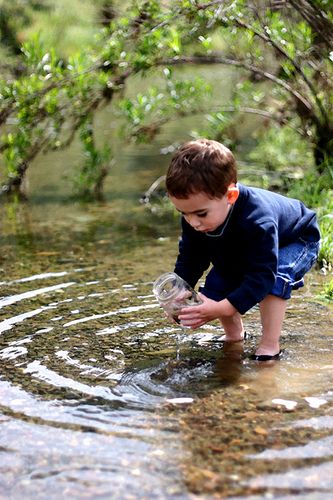
Superscript
Simple Activities
for Pond & Lake Play
I am so excited to have Kerri from Joys of the Journey guest posting at Buggy and Buddy today! She’ll be sharing some easy and fun ways to make a trip to the pond an absolutely wonderful learning experience for children. I just love the homemade items she created to help encourage all kinds of sensory exploration and fun! (Even if you don’t have a pond nearby, the homemade toys would be great for any type of water play!)
Exploring the Pond with Kids
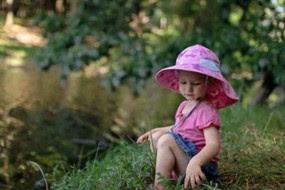
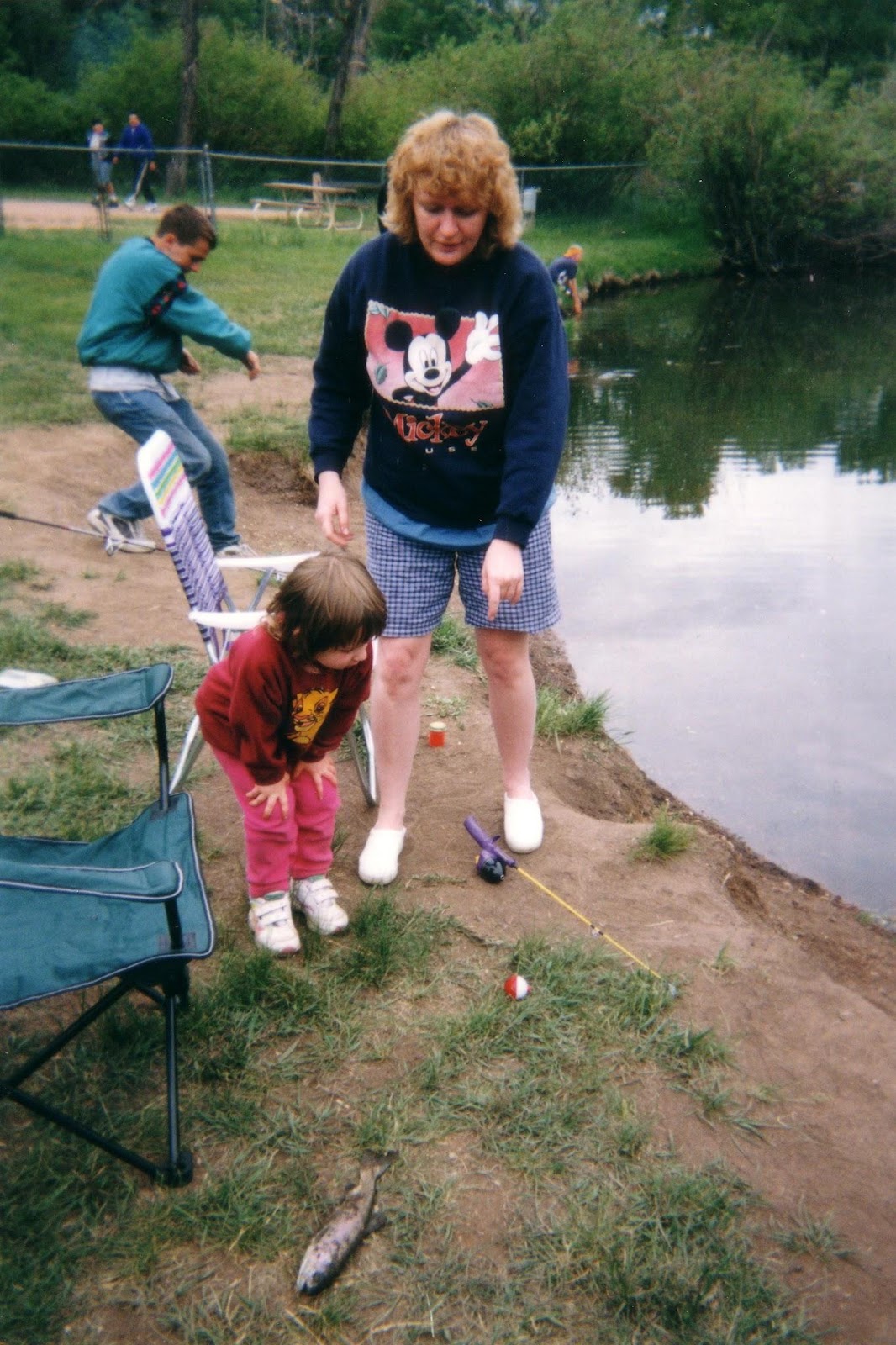
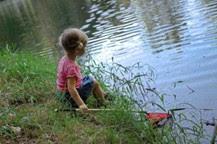
The pond is an amazing place to explore. There are so many things for kids to learn and discover by visiting one and it’s totally free entertainment. My little guy will happily play at our favorite little pond down the street for hours if time allows it! He loves to try and catch the minnows, sift through the sand and splash in the water.
Exploring Pond Life with Over and Under the Pond
(+ Free Printables)
I love exploring, observing, and studying nature with my kids. In fact, it’s one of my favorite parts of homeschooling. The funny thing is that it hasn’t always been that way. It wasn’t until we moved to North Carolina that I really began to appreciate nature and see it for the gift that it is.
The thing about that move to North Carolina is that we moved from a metro area to a home in a rural area with two ponds nearby; I can honestly say the daily observation of pond life is what got us hooked on nature study. Before that it was nonexistent. That’s why I’m excited to share an awesome book about pond life and a fun Pond Life Printable Pack with you!
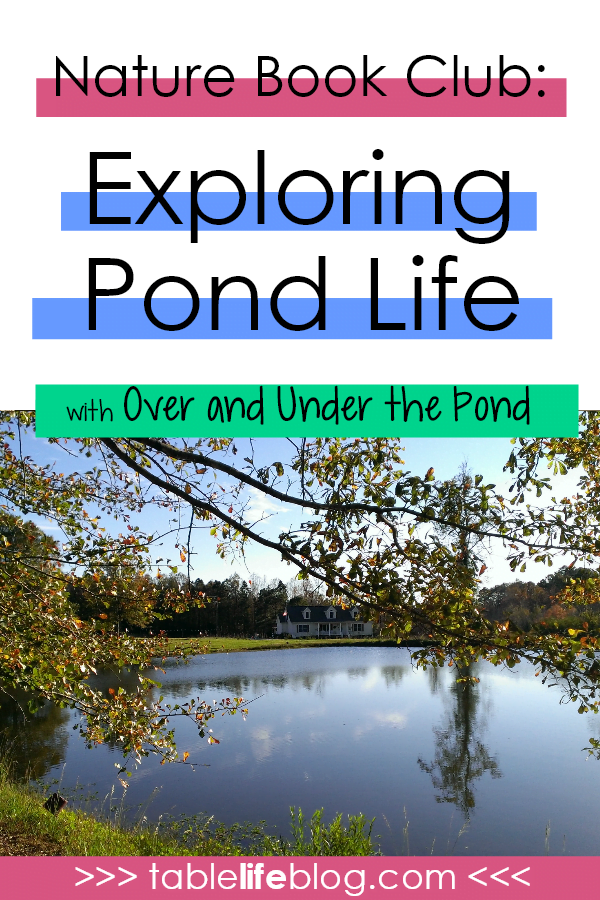
*Post contains affiliate links; see disclosure for details.*
It’s been a few years since we lived in the house by the ponds, but I was taken back to those days when we recently discovered Kate Messner’s Over and Under the Pond. In this gorgeous picture book, Messner and illustrator Christopher Silas Neal celebrate the life above and around the pond but also bring to life the world underneath.
This picture book format is perfect for younger children, but it doesn’t read like a typical story. Instead it takes readers along for the journey. Better yet, it also includes an author’s note about the pond ecosystem, a section about the animals featured, and suggestions for further reading on pond life and ecosystems.
Observing Pond Life
I mentioned earlier that we no longer live in the house by the ponds, but at the time we had a man-made pond across the street from us and a natural pond in our backyard. We walked around the ponds nearly every afternoon, but also observed them while we cooked our meals, ate dinner, and carried on with day-to-day life.
Animal Life Around the Ponds
The amazing thing about that backdrop was that we couldn’t help but notice the pond life around us. Like in Over and Under the Pond, it was normal for us to see turtles, frogs, herons, beavers, and dragonflies.
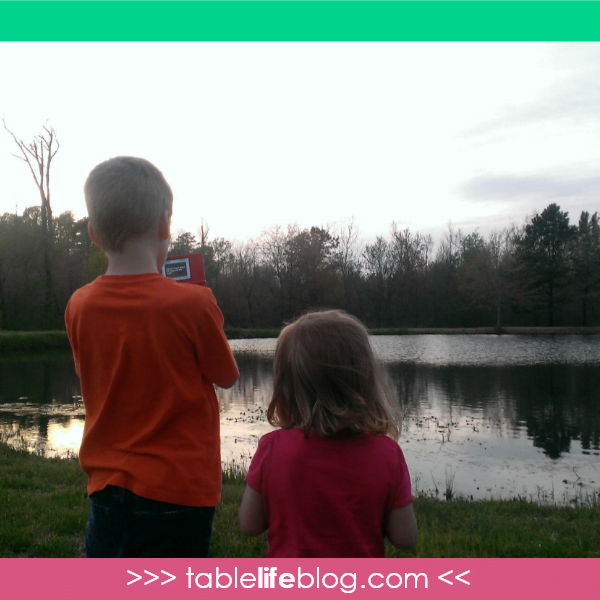
We also had regular visitors that aren’t mentioned in Over and Under the Pond. We often noticed geese, egrets, anhingas, deer, and unfortunately nutria.
For sure, these visitors inspired nature study while we were simply playing in the yard or walking to the mailbox.
Seasons at the Pond
Another thing we loved about our ponds was observing the differences from season to season. We lived there for nearly two years and loved the hustle and bustle of spring, the lush greens of summer, the colors of fall, and the quiet, but stunning world that winter brought.
Also worth noting, we weren’t the only ones who enjoyed the seasons changing at the pond. The winter picture below is one example of that. Our cat loved walking on the frozen water and exploring areas he couldn’t safely reach in other seasons.
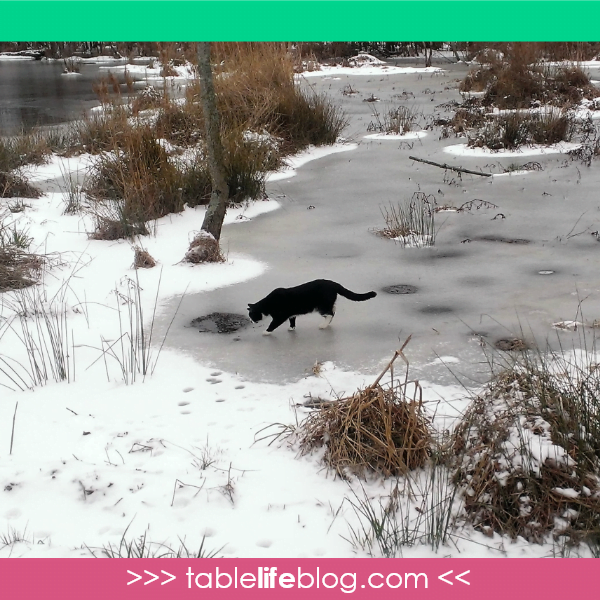
Now that we’ve moved, we stick to observing the ponds in our local parks and botanical gardens. It’s not quite as convenient as checking the mail, but these ponds are just a quick drive down the road from us now and we still enjoy observing the ponds from season to season.
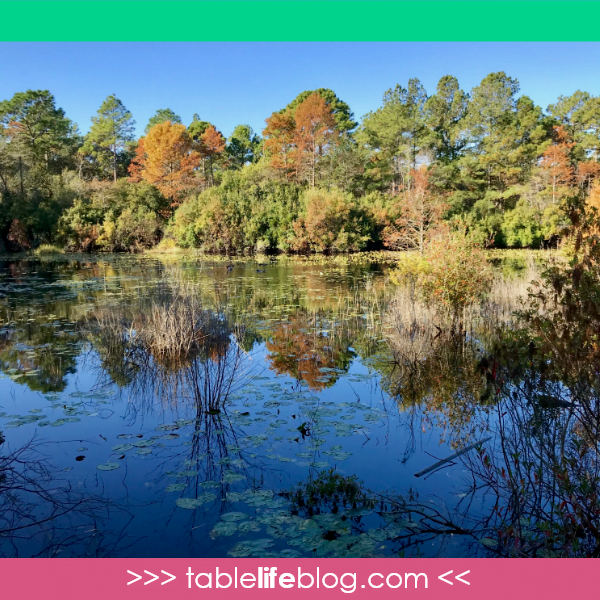
Other Life at the Pond
In addition to animals and seasons, ponds are also great for plant observation. The ponds around our former home were surrounded by trees, bullrushes, and reeds. Now that we’ve moved near the coast, our ponds still have trees, rushes, and reeds, but they usually have pond palms, lily pads, and moss all around.
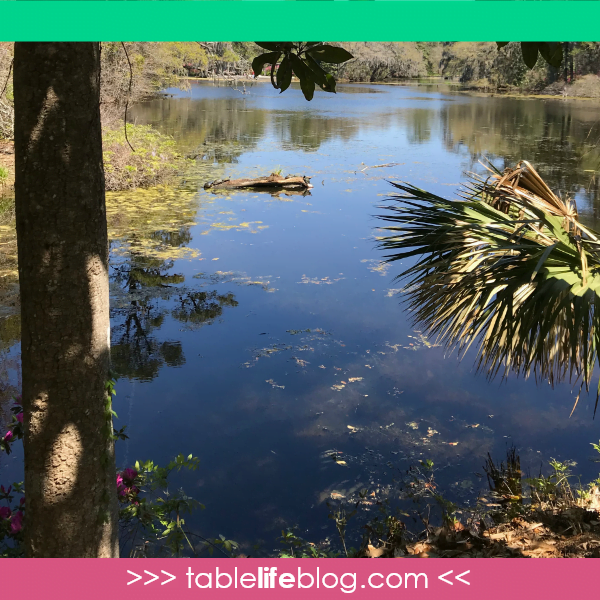
Free guide How to test the quality of open water in the wilds
for bathing or swimming.
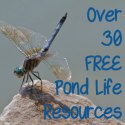

Turtles and Duckweed Nature Study

Exploring Pond Life with Over and Under the Pond ( Free Printables)

Exploring Ecology: The Many Parts of a Streambank - Eva Varga

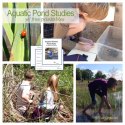
Outdoor Pond Studies: Getting Started with Aquatic Sciences
Always Think WATER SAFETY First!
** Never leave your child unattended near water, no matter how deep.**
Free guide How to test the quality of Open Water for bathing or swimming.
Being Fascinated with Lakes
My kids are fascinated with nature because I am fascinated with nature. Even things that may seem mundane to me at this point in my life might be new and exciting for kids. That is why I practice child-led exploration and make sure to get excited about whatever they discover. When I get really into the activity, it acts as the match to spark curiosity and adventure in my kids. So, get pumped! Yes, even if you don’t feel it. If you want your kids to have this connection to nature you must demonstrate it yourself.
That being said, I need to give parents a tip. Playing in the lake, kids will get wet and most likely dirty. Be prepared with towels and either wear waterproof clothes or bring a change. Water shoes are also recommended if you don’t know the lake.
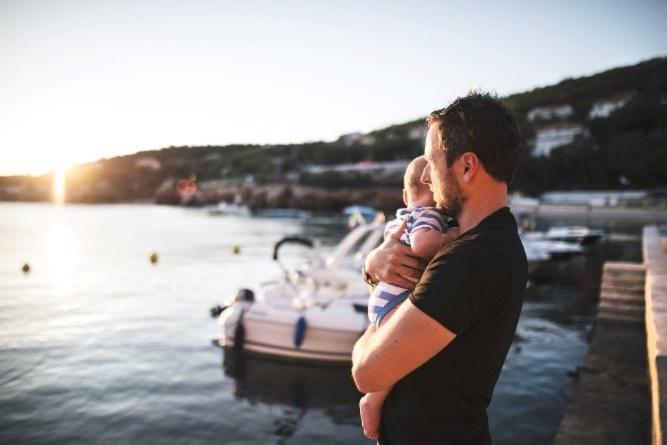
Taking Baby to the Lake Tips
There are few things better than going to the lake on a nice sunny day. In most cases, you don’t have to deal with the traffic at the beach and there’s usually a lot more shade provided by trees planted in the grass. The lake is a great place to make memories that will last a lifetime and you don’t have to wait until your baby is older. As long as you take the necessary precautions, taking baby to the lake is something you can do throughout the year. However, depending on where you live in the world, you’ll probably want to wait until the summer months. The lake is a lot more enjoyable when the sun is shining.
Whether you have found a lake while on vacation or there’s one in your city, you might as well take time to enjoy the beauty of nature. Below are tips for taking baby to the lake that will make the experience fun and safe.
1. Avoid Peak Sun Exposure
Going to the lake is obviously something that you’ll want to do during daylight hours. As with many other outdoor activities, it’s best to engage in them when the sun is shining and the birds are singing. When taking your baby to the lake, you’ll want to avoid peak sun exposure, which is during the timeframe of 10 a.m. and 4 p.m. This is when the UV rays of the sun is at it’s peak. If you don’t want to go before 10 a.m., you can certainly have a great time after 4 p.m., especially during daylight savings time when the sun sets later in the day. It also happens to be a great time of day to take family pictures.
2. Find a Location with Shade
When taking baby to the lake, one of the first things you’ll want to do when you arrive is to find a location where there is plenty of shade. Since it’s a lake, there are likely to be a number of trees in the area. The shade of a tree is a great way to combat exposure to UV rays. While you can certainly take other precautions, this is an added bonus. Shade can also keep everyone a lot cooler. There’s no doubt about the fact that sometimes it’s just too hot outside to feel comfortable. When you find shade, your outdoor experience will be a lot more enjoyable.
3. Be Sure to Cover Up
A priority when taking baby to the lake is being sure to cover up. A baby’s skin must be protected from the sun and one of the best ways to do this is by choosing articles of clothing that are lightweight, yet still protect the skin. While there are some days when it’s too hot to wear a lot of clothing, it’s still a good idea to wear lightweight clothes for sun protection. The good news is that there are a lot of fashion choices for babies that can help with covering up. In addition to lightweight clothes, you can use little bonnets and hats to protect your babies face. You’ll be able to take adorable pictures because babies look so cute in hats.
4. Bring Baby Sunglasses
Studies have shown that a baby’s eyes do not have the ability to block UV rays to the degree that adult eyes can. Fortunately, there are baby sunglasses on the market that you can buy for your trip to the lake. Most people use baby sunglasses because they look so cute. While they are likely to be a topic of conversation, baby sunglasses are also functional and a great form of protection when taking baby to the lake.
5. Provide Plenty of Water
If you’re like most people, you probably drink plenty of water throughout the day. If so, it’s not just a habit, it’s a necessity. The same applies when taking baby to the lake. Just like you need to drink water to ensure you’re hydrated, your baby needs water too. When you’re at the lake, it’s a good idea to ensure everyone there drinks water to stay hydrated. If you’re still breastfeeding, that can help to keep your baby hydrated, but that doesn’t mean there isn’t still a need for water. To make it easy to stay hydrated, try drinking water every hour. In addition to preventing dehydration, you’ll feel better, especially if you bring cold water and keep it in the cooler during your trip to the lake.
6. Choose a Lightweight Baby Carrier
There are all kinds of baby carriers on the market. Some are bulky and sturdy, while others are more lightweight, but still effective. When taking baby to the lake, you’ll need a lightweight carrier that’s breathable and circulates air effectively. This is for the comfort of you and the baby, especially during the summer months. If you decide to take your baby to the lake during the spring or when it’s not as hot outdoors, you can use a standard carrier. Don’t forget to choose one that’s also ergonomic.
7. Don’t Forget the Sunscreen
Without a doubt, one of the most important things you’ll need to remember when taking baby to the lake is the sunscreen. Sometimes it’s easy to think that only adults need sunscreen, but that is definitely not the case. It’s generally recommended that you choose an SPF that’s a minimum of 30 to protect your baby’s skin. Adults often spend time in the sun because they want to get a good suntan. Your baby obviously doesn’t need a suntan, so you’ll want to take every precaution to keep your baby’s skin protected.
8. Be Flexible
When planning time for taking baby to the lake, you’ll want to schedule the trip, but maintain flexibility. This is because anything can happen with the weather, even during warm months. While it might seem like a good day, bad weather can make a trip to the lake a disaster. You might as well avoid as many difficulties as possible by monitoring the weather to ensure it’s the best time to go. If there’s a chance of rain, you should plan your trip for another day. You’ll also need to be flexible about the activities at the lake because you don’t want to do anything that could put your baby in harm’s way. Time at the lake should be an enjoyable and relaxing experience with your baby and other family members.
9. Pack a Blanket
While taking baby to the lake can be a lot of fun, you have to be prepared to make your time there comfortable. By packing a blanket, you can create a comfortable space where you can lay your baby down for a few minutes or let your baby crawl around without getting on the grass. While there’s nothing wrong with your baby spending time on the grass, the blanket is better because you won’t’ have to worry about as many pests, like ants. A blanket is also great because you can have a picnic on it. Just don’t forget to fill the picnic basket with all of your favorite summer fruit.
10. Prepare For An Emergency
An emergency can occur when taking baby to the lake, so make sure you’re prepared. Just like anywhere else you decide to go, it’s a good idea to pack supplies for emergencies. This might include ice, bandages, disinfectant wipes, and anything else that you would typically find in a first aid kit for children. You might also want to include medication if you plan to be away for a long period of time. It’s possible to spend hours at the lake if you take plenty of food with you.
11. Bring a Few Toys
Since your time at the lake is probably for the purpose of having a good time, one thing you’ll want to bring is a few toys. Most babies will enjoy playing with a toy regardless of the location. You can choose to bring the toys that you know your baby will enjoy. In fact, you can also bring books so that you can spend time reading to your baby at the lake.
12. Choose Swim Diapers
Although taking baby to the lake might not involve going into the water, there’s a chance that you might decide to do so. If that happens, you should make sure your baby is wearing swim diapers. The last thing you’ll want to do is use regular diapers because your baby can end up being uncomfortable. If you know for sure that you can’t go into the lake water due to issues with possible contamination, there’s another option. You can bring a baby pool instead. A baby pool can be great because it doesn’t require a lot of water and your baby can enjoy time outdoors in water on a beautiful day. You can fill up the pool at the lake or bring water since a true baby pool is very small.
These are all ways that you can maximize the enjoyment of your time at the lake with your baby.
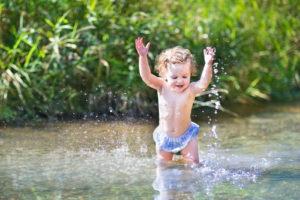
Lakes are a fascinating place, an ecosystem in their own right. They sustain entire life cycles of plants and animals in their own space. In the summer they hum with life, providing a vibrant atmosphere to explore. From the birds and insects filling the air with song to the fish flashing by in the water and the bullfrogs calling just out of reach, they are a child’s paradise of discoveries.
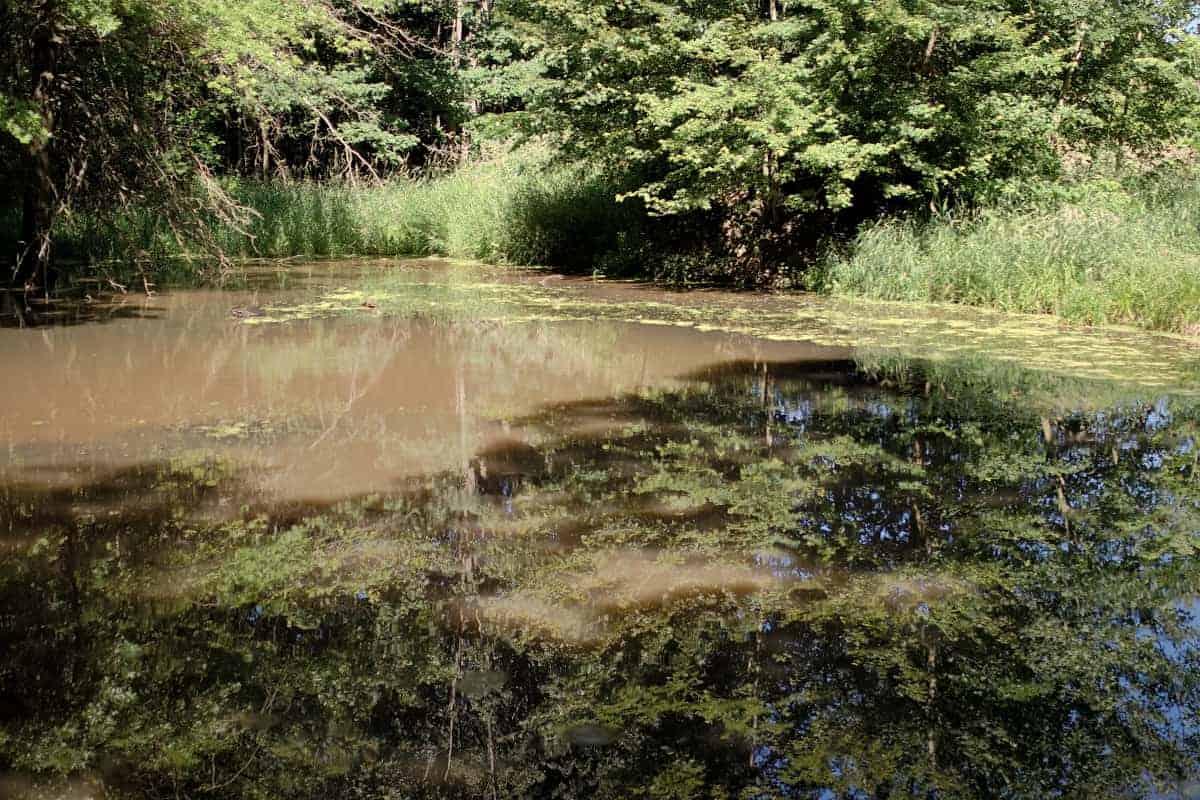
Exploring lakes with kids is also timelessly interesting, entertaining, and relaxing. Most children can find an endless number of interesting occupations at a lake. I can never believe how long my kids will spend just tossing rocks or sticks into the water. And I’m amazed at how beneficial that simple activity is: building strength and developing motor skills, making them aware of cause and effect, and introducing them to basic physics (gravity and displacement, for instance). Today, we will look at just a few ways you can experience a lake with your children, weaving education and development together with delightful play.
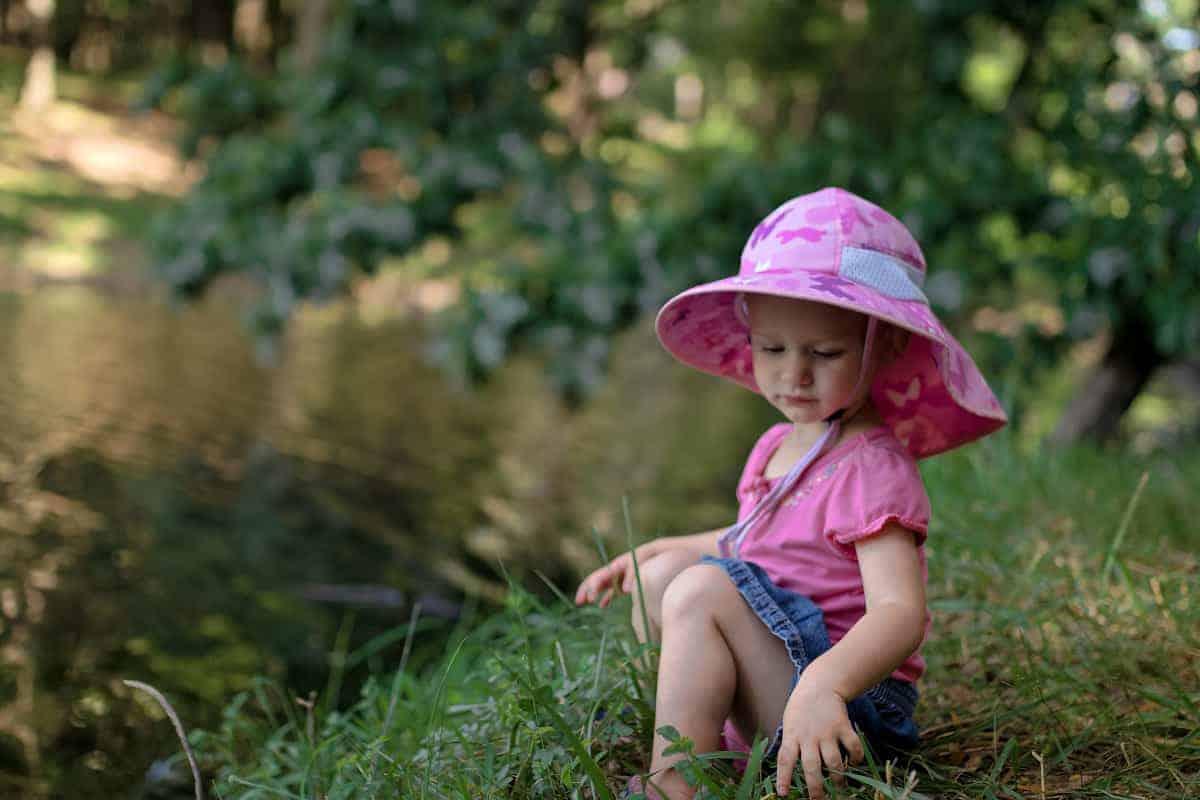
A note on lake safety
Before we get started, I’d like to mention some safety guidelines. Any time water is involved, we have to be extra conscious of our children’s safety. Water is such a fun thing that few children understand its danger. And unlike swimming beaches, lakes often have slippery mud or grassy banks that can drop abruptly into deep water. Teaching children to swim is the number-one prevention to drowning accidents, but even that isn’t a guarantee of safety. Never leave children unattended near any water, especially a deep body of water like a lake.
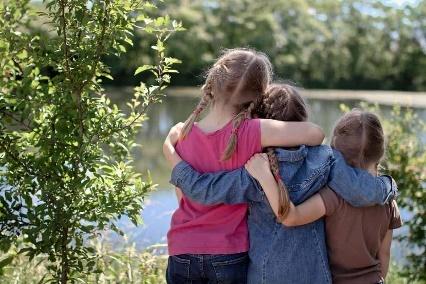
Be safe together!
If you are comfortable allowing your children to wade in the water, make sure you have carefully checked out the wading area yourself for dangers like slippery mud and sharp drop-offs. And even if you have instructed your children to stay out of the lake, we should be aware that accidents happen and a child can slip and fall into the water in an instant. Stay close and focused on your children, adventuring and playing together. Exploring lakes with kids should be fun and safe.
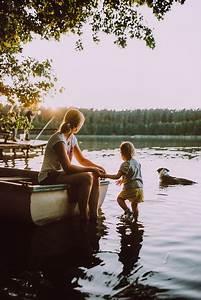
Teaching nature skills
To start off exploring a lake with kids, simply walk around the lake or the area that you will be in. Talk before you start about how everyone needs to use their “nature skills” to explore the lake area. These skills include walking quietly, speaking quietly, and trying not to disturb the wildlife around you. We always have to work on sharing our discoveries quietly—the first child to yell they saw a goose will probably scare off the whole flock! This is also a good time to teach children how to study nature without disturbing it, to observe but not take, and to show respect for the natural environment surrounding them by being careful where they step and what they touch.
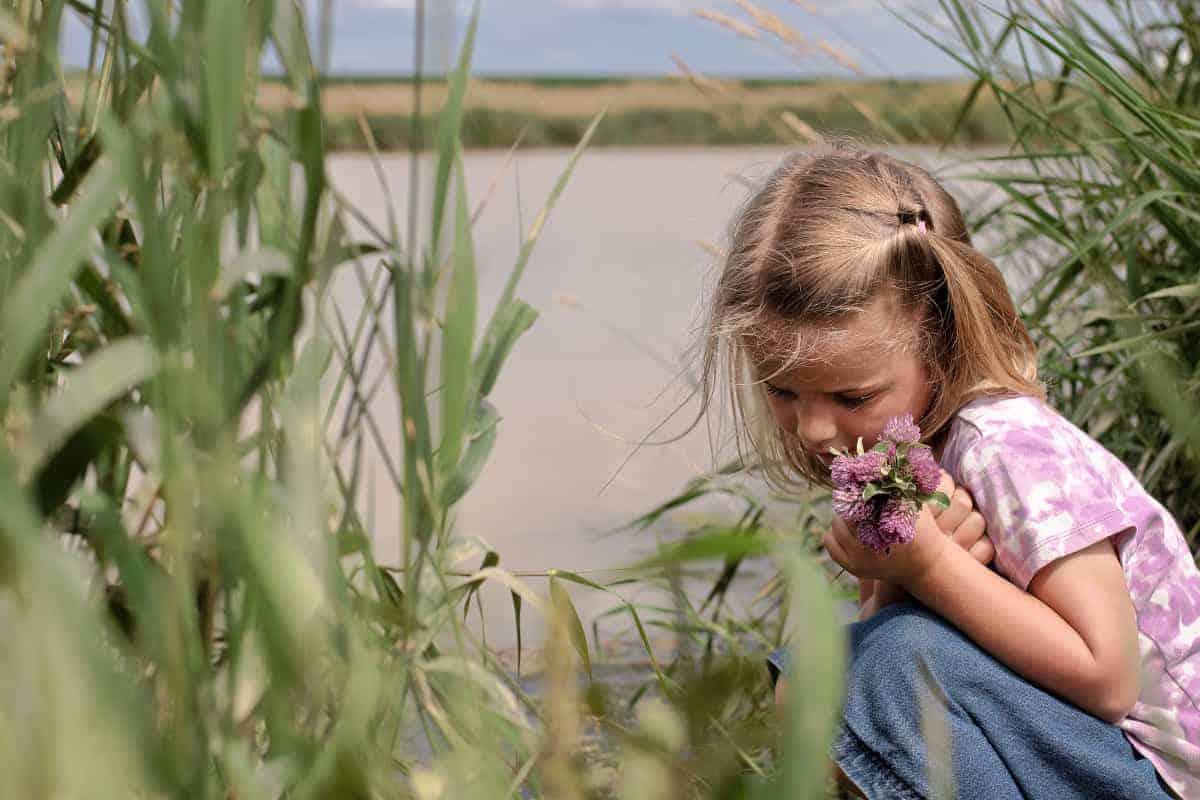
Sensory exploration
Exploring a lake with kids provides a great sensory experience. It’s easy to get started by asking questions involving the senses. What do you see? It’s like an amazing game of “I Spy.” Do you see those wildflowers on the far bank? Can you spot that turtle out sunning on a log? How many frogs can you count? Oh, no, one just ducked underwater!
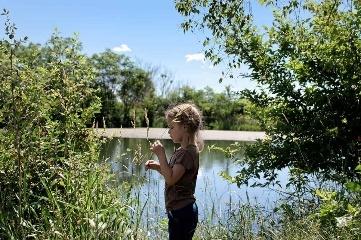
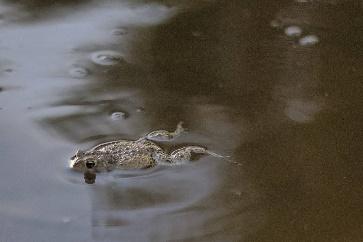
Hearing and Smelling
Observing the natural atmosphere of the lake moves quickly to hearing. Do you hear the birds singing? The bullfrogs calling? The wind whispering through the tall grass? The buzzing of the insects? And then there is always smelling—and if the lake you are visiting has the smell of stagnant water, your children are sure to notice it! But you can also smell wildflowers and a fresh breeze. Honeysuckle and freshly cut grass. I love how much my children will get into talking about all the details they notice.
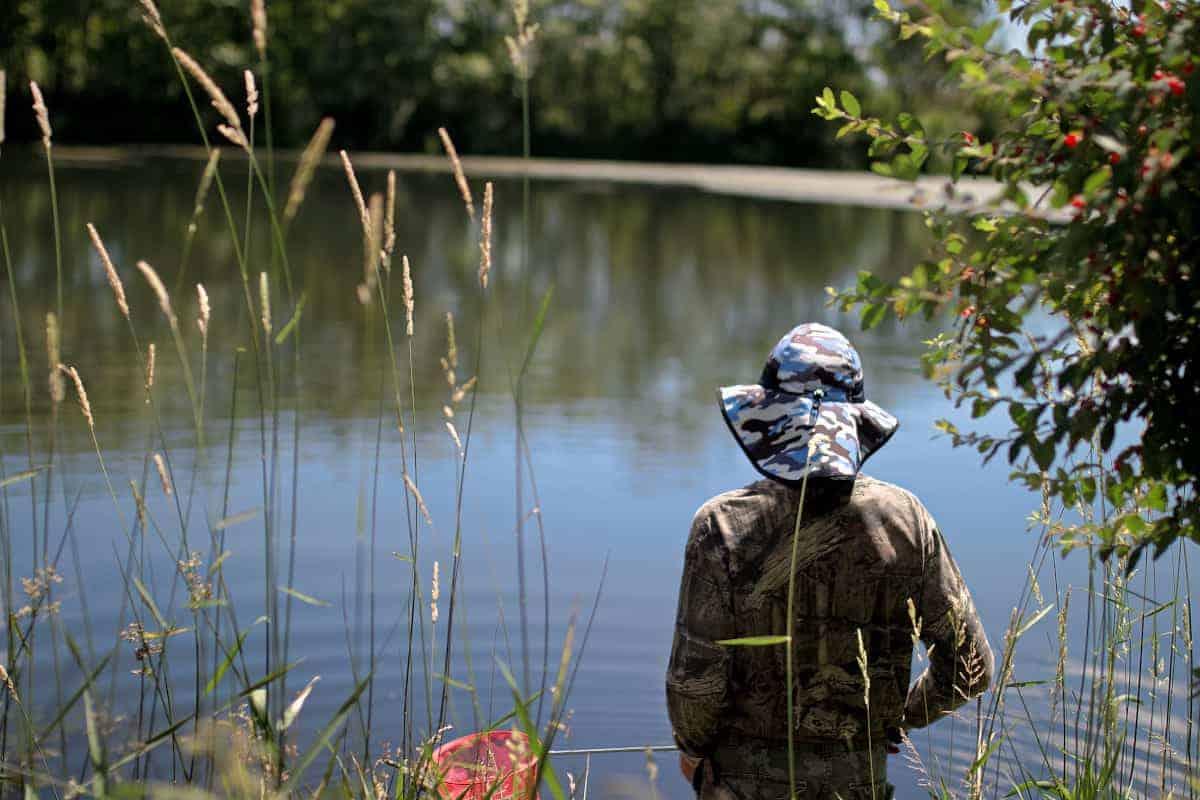
Unforgettable sensory experiences
When exploring lakes with kids, there are countless ways to experience the natural world. How many things can you find to touch? From the smooth leaves and raspy blossom of the cattails, to the silky water and slippery plants in the lake, to the slimy skin of a frog and the soft whisper of a dropped bird feather, there are a multitude of things to feel around a lake. (Of course, unless you have the owner’s permission to pick things, make sure you give careful instruction about not picking any plants or disturbing the environment. Leave it unspoiled for everyone to enjoy!) Touching lake creatures might stretch the sensory comfort zones of some kids, but if you have the opportunity to let your children touch a frog or a fish, it will be a sensory experience they won’t forget!
Resources
We have found that nature guides and handbooks are valuable resources for learning about aqua life. Teaching older kids to look up different plants and wildlife that they see helps them learn on a deeper level. Once they have looked up a bird or a flower in their guide book, they are much less likely to forget its name or characteristics! Plus, we can learn together all the things I don’t know (which are many!). We use some of the classic field guides, like Kauffman Field Guide to Birds of North America.
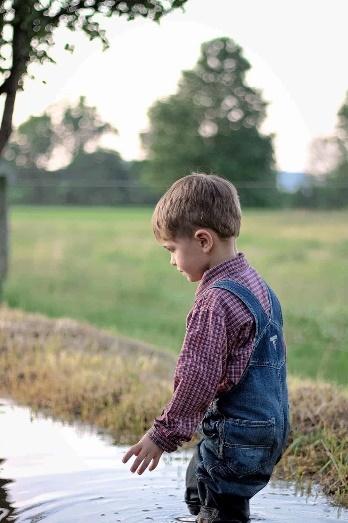
There are also some great resources available for less than $10, like these illustrated nature guides. The entire Take-Along Guides series is geared toward helping children learn about nature in an easy-to-find, graspable format. I can’t recommend them enough if you are serious about helping your children learn about wildlife and plants for themselves.
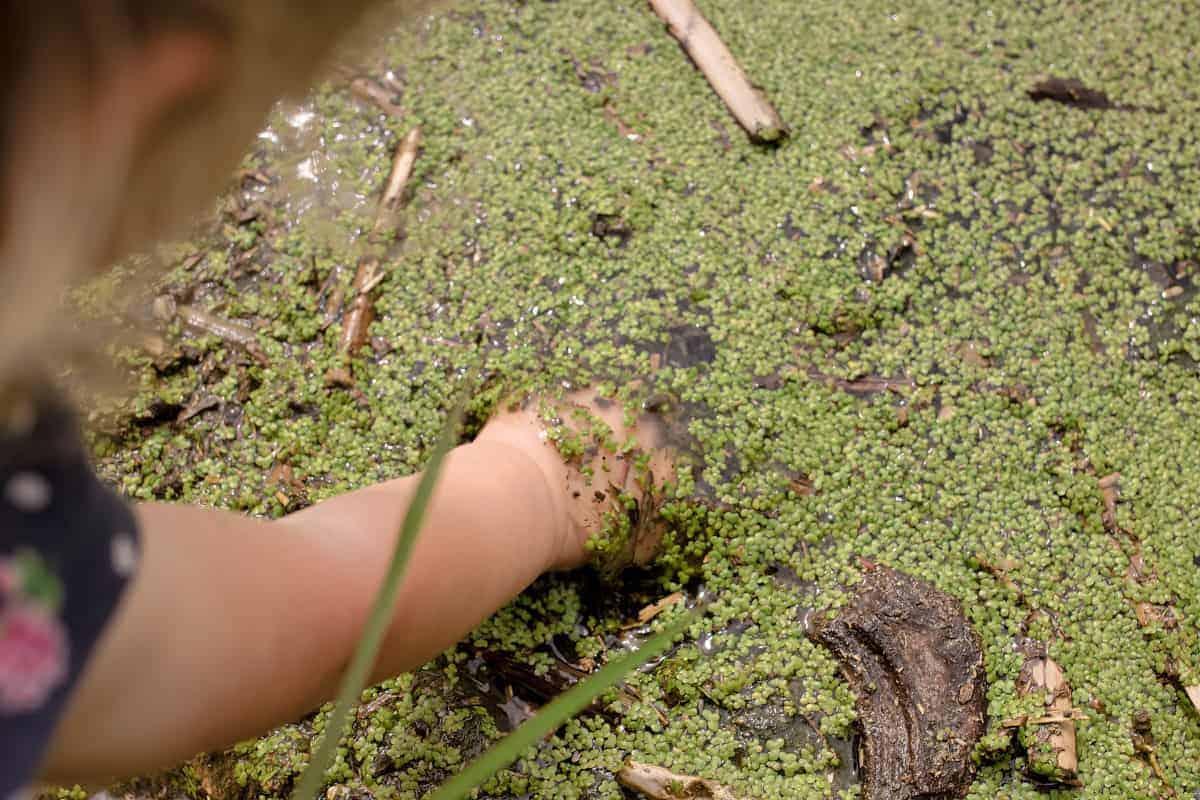
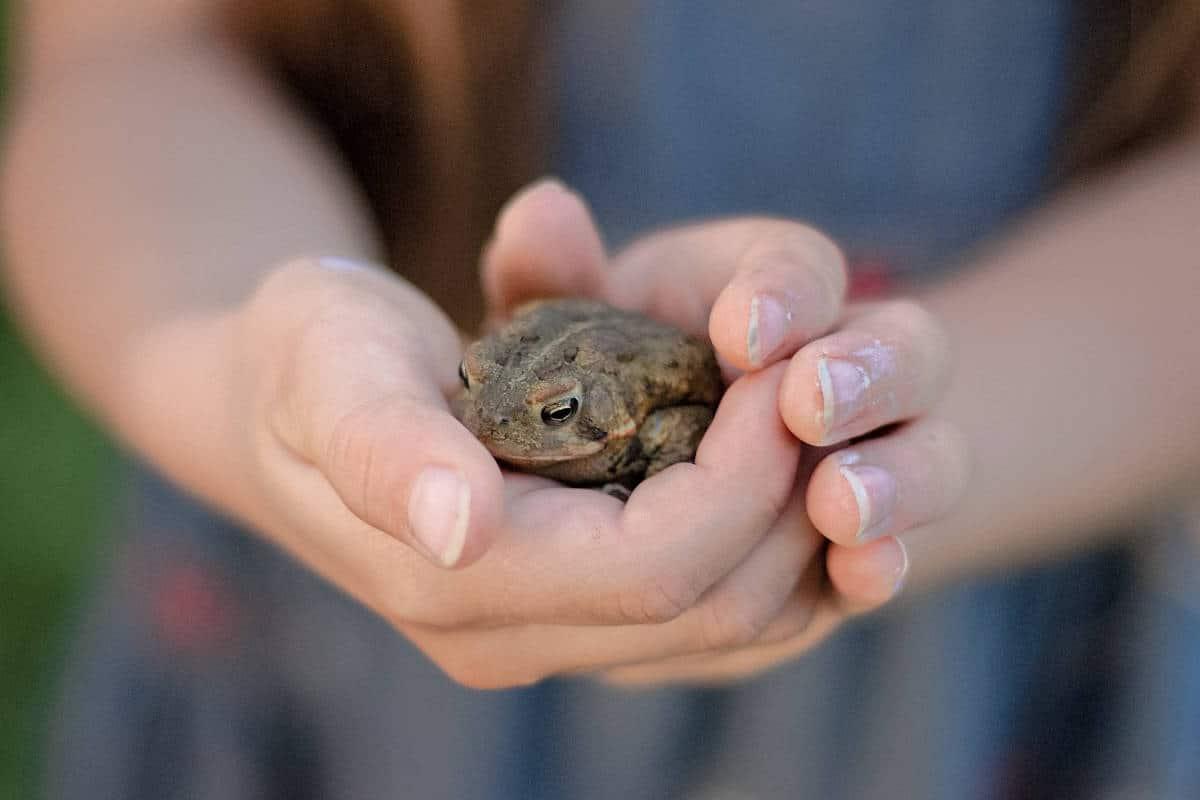
Hands-on Adventures for Exploration
Getting wet and dirty is part of learning about the lake environment, too. If my children are within reaching-distance of water—any water—they are sure to get wet! It doesn’t matter the temperature or what they’re wearing. If we are going near water, I just plan on them getting soaked.
Let Your Baby Explore
When you take baby to the lake or a river, you have to let them explore everything in nature. While the water should be the central focal point and goal of the adventure, there are many opportunities to familiarize your baby with nature before you get there.
Letting baby feel pinecones, acorns, tree bark, leaves, and smooth river rocks are all part of the experience. Since babies are not cognizant about what they are feeling and unable to articulate it into words or ideas, they function at a more sensory level.
The fragrant smell of cedar firewood, the hickory of a barbeque, and the fragrance of flowers can all be a treat to your baby’s senses. And they will also enjoy the sounds of the rushing waters, the birds chirping, and other critters.
So, if the lake you are visiting is wading accessible, wear some water-appropriate clothes and footwear. Bring some buckets, a net, a magnifying glass, and explore a lake with kids up close if they have older babies!
What do you need to pack for a successful family day trip to the lake?
Here are the essentials, with a few tips for where to buy them (or download the printable below).
Swimsuits & rash guards
Dry change of clothes
Towels
Sunscreen
Sunglasses
Hats
Coast-guard certified life jackets (we like the Puddle Jumper for swimming but a traditional toddler life jacket with a head up float feature may be safer for boating)
Swim goggles or masks
Floats, inner tubes, & noodles
Sand toys
Snacks & food
Camera
Swim diapers (for babies & toddlers)
Bug spray
Drinks (especially bottled water)
Cooler & ice
Paper towels
Wipes
Trash bags
First aid kit
Ziploc bags (put dry items in them to protect against splashes!)
Swiss army knife
Flip flops and/or water shoes
Flashlight & batteries (this floating waterproof flashlight is an inexpensive choice)
Fishing supplies & license
Cell phone waterproof sleeve (we swear by this one for our iPhones, even while taking photos underwater!)
Cooking utensils or supplies if needed (plates, serving spoons, knife, cutting board, grill and related supplies like matches, charcoal/propane, tongs, aluminum foil)
Life Lessons from Water in the Wilds
Once all the play is done and you think you’ve learned all you can from a creek, sit back and just watch it. Have you seen the Disney movie, Pocahontas? “You can’t step in the same river twice.” The water is always moving, renewing itself. It shows us that nothing ever truly stays the same. Sometimes the change is quick like with the flow of the water, other times it is slow like the erosion on the shoreline. Change is always happening around us and watching the creek can teach us to embrace it in our own lives instead of fearing it, learning to have fun and live in the moment.
One Last Dance with Water in the Wilds
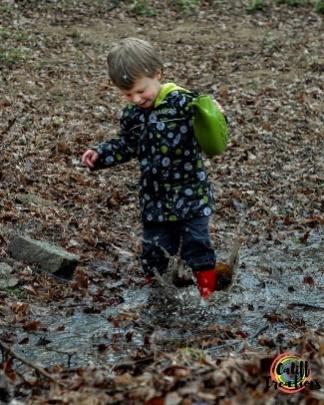
As you ponder this interconnection based on water, maybe you can come up with a story about the water in the creek in front of you, encouraging kids to help come up with it. The water in the creek might be from snowmelt up high on a mountain or heavy rainfall a few miles away. Tell a story about how that water goes on a journey that takes it from the creek to the ocean and around the world. It has spent time in the clouds and then fell back to Earth as rain, snow, or ice. Maybe it watered a field growing food to feed the hungry. Your story can go anywhere and shows kids how water is the one thing that connects all life on Earth.
Incredible Ways To Paddle Board With Babies and Kids
Written by kidscanhike
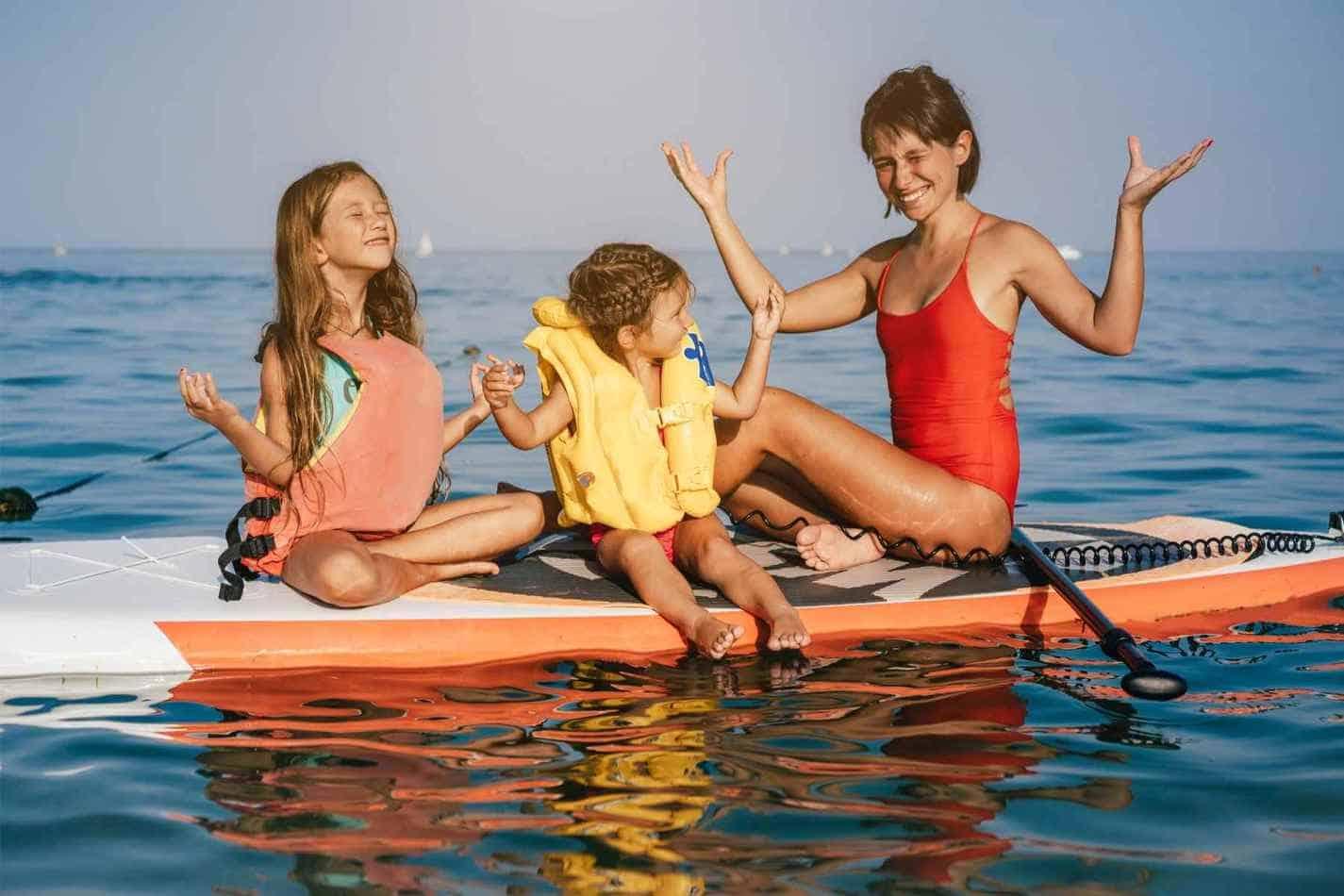
Paddle boarding with kids and babies is a thrilling adventure for babies, toddlers and kids. Get out this weekend and take your kids paddle boarding. Babies and kids will thrive
Fun and Easy Game Ideas
For a Party At the Lake
Let’s be real—kids love throwing things into other things. So, grab a few metal buckets, label them with fun “lake names” like Bass Bay or Trout Pond, and line them up along the dock or grass. Then, give each child a handful of small beanbag fish or rubber bait (you can make your own from socks if you’re in a pinch), and challenge them to land their catch in a specific “lake.”
You can assign different point values to each bucket or have them “fish” in teams if the group’s bigger. Keep it casual or turn it into a full tournament with silly prizes like “Most Dramatic Splash” or “Loudest Fisher.”
This one feels especially on-theme for a fishing themed birthday party and makes a great warm-up game before kids head off to actually try fishing—or, let’s be honest, poke sticks into the water and yell about seaweed.
2. Campfire Scavenger Hunt by the Lake
This game is equal parts calm and chaos (in a good way). Hand out nature scavenger hunt cards or simple hand-drawn checklists—think “find a smooth rock,” “spot a duck,” “collect a fallen leaf,” “something that smells weird.” Kids can work in pairs or solo to explore the area safely, with grown-ups or older siblings nearby to supervise.
It fits beautifully with a campfire or one happy camper theme, especially if you tuck in some surprises (like plastic bugs or mini flags) to be found along the way.
Afterwards, gather around a real or pretend fire pit, share stories about the weirdest find, and hand out scavenger badges (stickers on old jar lids = medals now). Bonus points for setting up a marshmallow roasting station post-hunt.
3. Lake Floatie Relay
Ready for a little high-energy splash action? This one’s simple: two teams, one big inflatable per team (think donut or fish-shaped floaties), and a shallow area of the lake or beach. Each player must hop on the float, paddle or walk to a marker and back, then tag the next teammate.
If the kids are little or the water’s chilly, you can do the same on land with big inner tubes—just have them run or hop down a set course.
The laughter factor is off the charts, and it adds a fun touch of boat party energy without needing actual boats. You can even tie it into a nautical birthday party theme by having mini sailors hats or boat-themed bandanas for each team.
Keep towels on hand. Maybe snacks, too. And maybe your camera.
4. “Catch the Fish” Camp Game
This one’s perfect for a post-snack, pre-cake moment when you need something fun but not too frantic. You’ll need a blue sheet or tarp for the lake, a few cut-out paper or foam fish with different point values written on them, and a small fishing pole (a stick with string and a clothespin at the end does the job).
Kids take turns “casting” their line while blindfolded, and someone hiding behind the tarp clips a fish to the line. They reel it in, read the points, and see who gets the biggest haul.
It’s mellow enough for younger kids but still brings the fishing party ideas charm. Add silly fish names like “Professor Gillbert” or “Bubbles the Troublemaker” and you’ll get giggles, guaranteed. Works well near the water or under a shady tree.
5. Boat Craft + Floating Parade
If you’re throwing a boat birthday party or just want a creative wind-down moment, this craft-meets-competition idea is a winner. Set up a simple craft station with foam trays, pool noodles, cardboard, and waterproof markers. Have each child build and decorate their own “party boat” with sails, flags, or even action figures aboard.
Once everyone’s ready, do a float test at the shoreline and send them down a mini racecourse—either in the water (close supervision required!) or just across a blue tarp “lake” if staying dry is the goal.
You can add categories like “Most Creative,” “Fastest Boat,” or “Most Likely to Sink” (in a loving way). It’s a sweet wrap-up activity that also doubles as a take-home party souvenir.
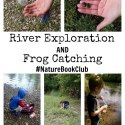
River Exploration and Frog Catching {#NatureBookClub} -
Final Thoughts
Throwing a kids lake party doesn’t have to mean planning like you’re hosting summer camp. A handful of games, a few basic props, and a whole lot of space to splash and laugh is really all you need. These ideas are easy to pull off with dollar-store supplies and a bit of imagination—and most importantly, they let the kids take the lead.
Whether you’re going full-on camping theme party or just adding a bit of fishing party food and calling it a day, you’re creating something memorable. And if the adults sneak in a boat nap or two during the games? Honestly, even better

Superscript
Family Friendly Water Activities
Engaging in family-friendly water activities is a fantastic way to spend quality time together, stay active, and enjoy the outdoors.
Whether you’re swimming at the local pool, exploring nature on a kayak, or having a blast at a water park, these activities offer endless opportunities for fun and bonding.
With proper planning and safety precautions, your family can create unforgettable memories while enjoying the refreshing and exciting world of water activities.
So, grab your swimsuits, pack your bags, and get ready for a fun-filled day out on the water!
Superscript
PLAY AND LEARN WATER EXPERIENCES
Water play invites children into a multisensory experience, offering opportunities to explore the unique textures, sounds, and visuals specific to water.
Tactile Experiences
Water play offers many different tactile experiences, from exploring liquids to noticing the changing texture of wet sand and sponges.
How to Support Textural Experiences
Offer interesting toys and materials such as sand, bubbles, sponges, and a variety of textured bath toys.
Introduce sensory-rich vocabulary such as slippery, bubbly, crunchy (sand), and squishy.
Auditory Experiences
Water play provides opportunities to explore the rich sounds of water, including splashes, trickles, pours, gushes, and drips.
How to Support Auditory Experiences
Model different ways to explore water sounds by pouring, stirring, splashing, and dripping.
Introduce sensory-rich vocabulary such as drip, pour, splash, gush, and trickle.
Visual Experiences
The reflections, distortions, movement, and diluting of substances in water provide engaging visual experiences for children. Water play is also an excellent opportunity to practice hand-eye coordination as children scoop and pour.
How to Support Visual Experiences
Include drops of liquid watercolor or food coloring, ice cubes, or bubbles in water play.
Encourage children to track objects while stirring or follow the movement of water poured into wheels, tubes, or ramps.

Social & Emotional Benefits
Social Development
Water play supports children’s social development by providing a fun way to practice cooperation and teamwork skills in pairs or groups. Because water play is so appealing, children are highly motivated to collaborate and navigate conflict with others to participate.
How to Support Social Skills
In the classroom, set up several water play activities at the same time, allowing children to play alongside each other without feeling overwhelmed.
Join water play and gently guide children through conflicts like taking turns or collaborating.
Model setting boundaries for children who prefer to play alone.
Offer multiples of favorite water toys to prevent frustration.
Emotional Development & Regulation
Water play supports children’s emotional regulation, offering a calming or energizing sensory experience, building confidence, and experiencing a range of emotions, from joy to frustration to pride.
How to Support Support Emotional Regulation
Be available for children during water play to provide guidance or celebrate with them.
Demonstrate calming techniques like swishing your hand underwater or gently pouring water.
Language Development
Water play promotes language development by offering a perfect opportunity to introduce sensory-rich vocabulary, encourage planning and collaboration, and describe observations.
How to Support Language Development
Introduce sensory-rich vocabulary linked to children’s actions, like splash, pour, and squish.
Narrate your own actions during water play, fostering language development with statements like, “I am going to dunk this sponge and then wash the boat.”
Suggest imaginative scenarios during water play, prompting children to narrate stories and practice descriptive language.
Final Thoughts
Water play offers incredible benefits for children across all learning domains. Sensory play with water can target specific skills or developmental delays and provide a medium for self-regulation. Explore my favorite water activities for early learners.
You can make water play more successful and less hectic using tips from my Guide to Water Play.
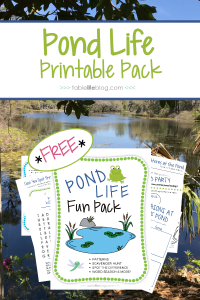
If you’re planning a pond study with your kids in upcoming weeks, I invite you to use this Pond Life Printable Pack to add some fun to your study.
Get Your Pond Life Fun Pack!
Pond Life Picture-Word Cards
These Pond Life Picture Word Cards will work well with a Pond Life Theme. Included words are turtle, fish, duck, frog, tadpole, dragonfly, swan, alligator, salamander, snail, water bug, heron, lily pads, cattails. There are a total of 14 words.
Find more word card sets in the Picture Word Cards collection.
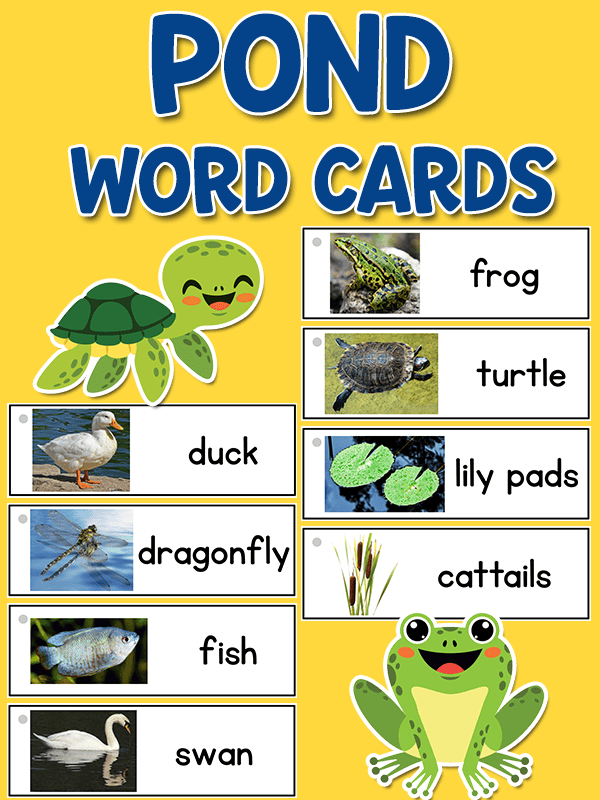
How to use the word cards:
During each theme we do in my classroom, I put a pocket chart of word cards related to our theme on the wall in our Writing Center area. The kids can take the word cards out of the pocket chart and take them to the table to copy them, if they choose. We also use them for large group activities, such as clapping the syllables in the words.
In case you want to make a little picture dictionary with the word cards, there are punch holes in the top left corner. Use a metal binder ring to hook the set of words together. The picture dictionaries save space in the classroom.
You might also want to put them in the pocket chart during the theme, then later hook them on a picture dictionary ring to add to a collection of thematic words through the year.
The blank set of cards has the picture without the word. These can be used for other languages or other writing styles, such as D’nealian.
Download the Pond Word Cards:
Note: This is a free printable, just click to download.
Also, while this printable pack was inspired by Over and Under the Pond, we’ve been reading lots of other books about ponds recently. If you’re looking for some additional reading to help you study pond life, don’t miss my pond life book list. I’ve got lots of options for you there!
Nature Book Club Monthly Linkup
This month’s Nature Book Club is all about water and we’ve got some awesome book-inspired nature learning activities to share with you! Let’s take a look:
Seasonal Pond Study and Printables from Barbara at Handbook of Nature Study
Pond Life Printable Pack from Emily at Table Life Blog (That’s me!)
Above and Below a Pond Unit Study and Lapbook from Tina at Tina’s Dynamic Homeschool Plus
Online Book Study about water cycle from Dachelle at Hide the Chocolate
STEAM Challenge – Does Water Ever Flow Up? from Erika at The Playful Scholar
Who Was?® What Was?® Where Is?® Book Series: Where is the Mississippi River? from Sharla at Minnesota Country Girl
River Exploration and Frog Catching from Thaleia at Something 2 Offer
*August theme:
Water: Streams, Rivers, & Ponds*

The Industrious Beaver Nature's Engineers

Loads of Toads & Frogs Unit Study and Lapbook

Seasonal Cattail Nature Study and Printable

River Exploration and Frog Catching {#NatureBookClub} -

STEAM Challenge: Does Water Ever Flow Up?
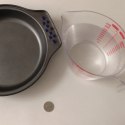
Water - Refraction Hands-on Activity

Pond books for kids:
There are so many creatures that live in a pond! Here
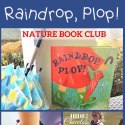
Raindrop, Plop! Nature Book Club ~ A Party School about Water
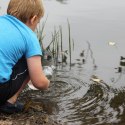
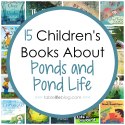
What to Read: Children's Books About Pond Life

All About Ponds | A Unit Study Resource Round Up
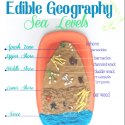
Super Seashore Watching Unit Study and Beach Lapbook

Exploring Water Quality with At Home Water Testing

Where is the Mississippi River?
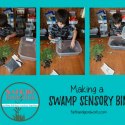
Swamp Sensory Bin | Nature Book Club | Faith & Good Works
